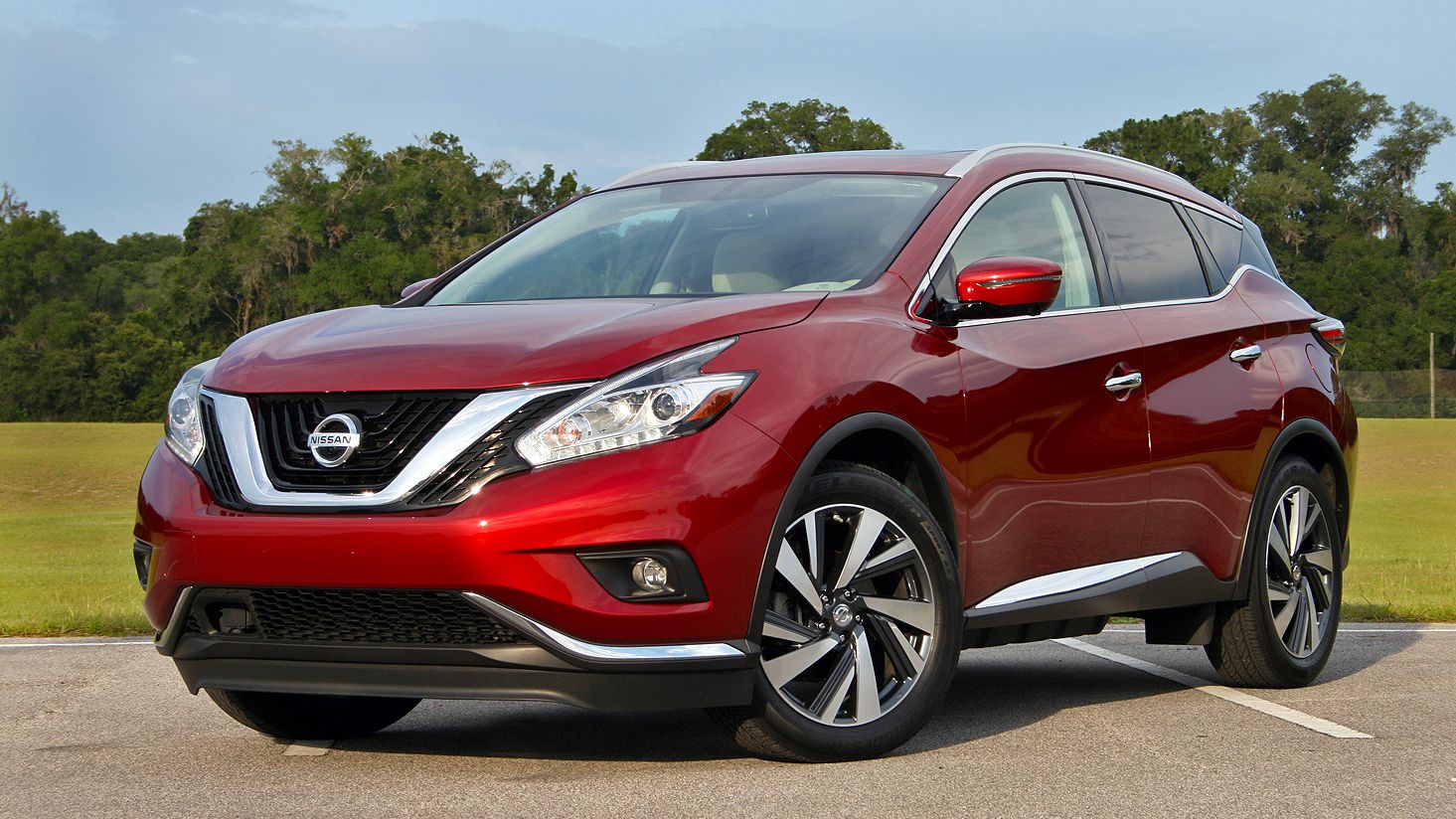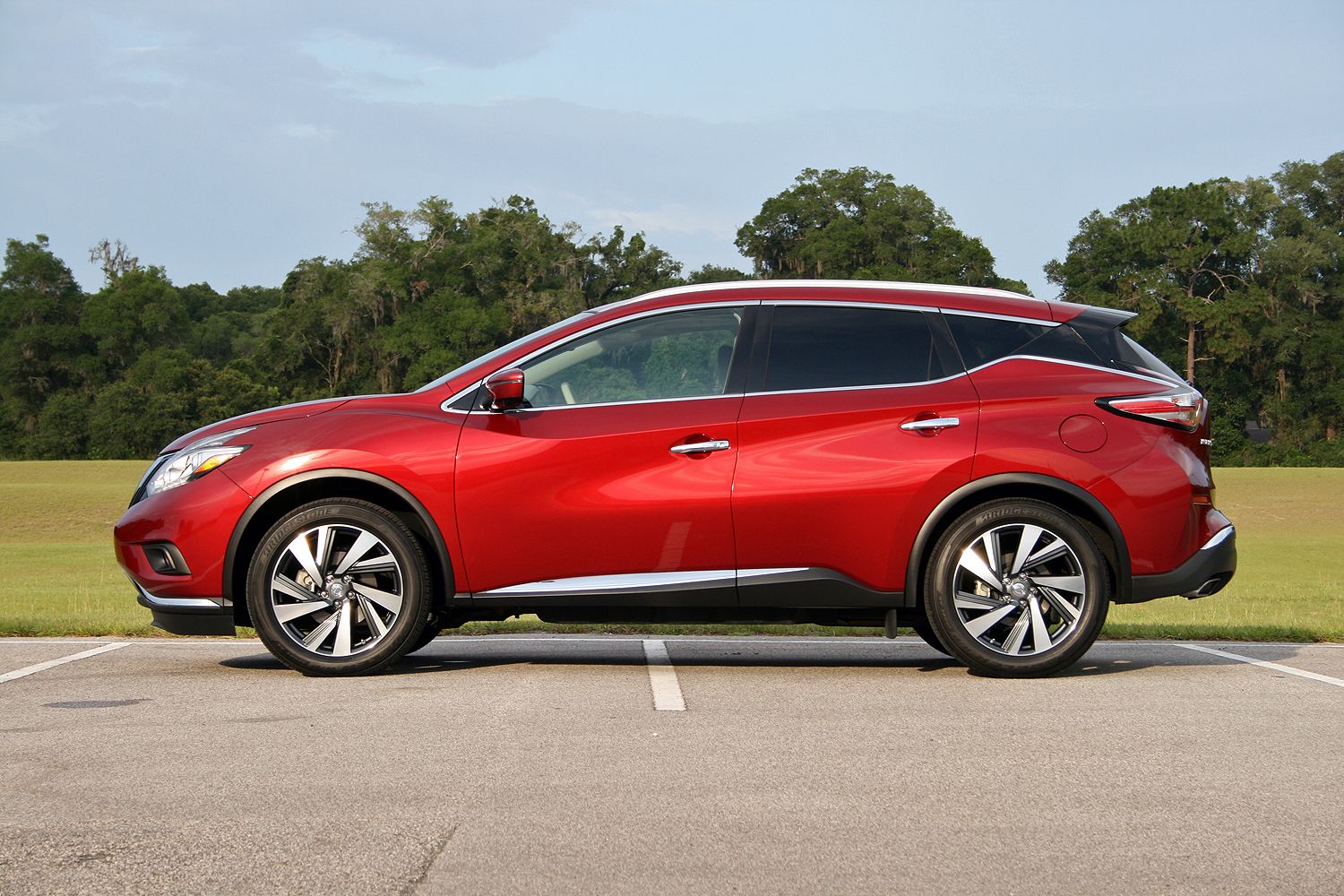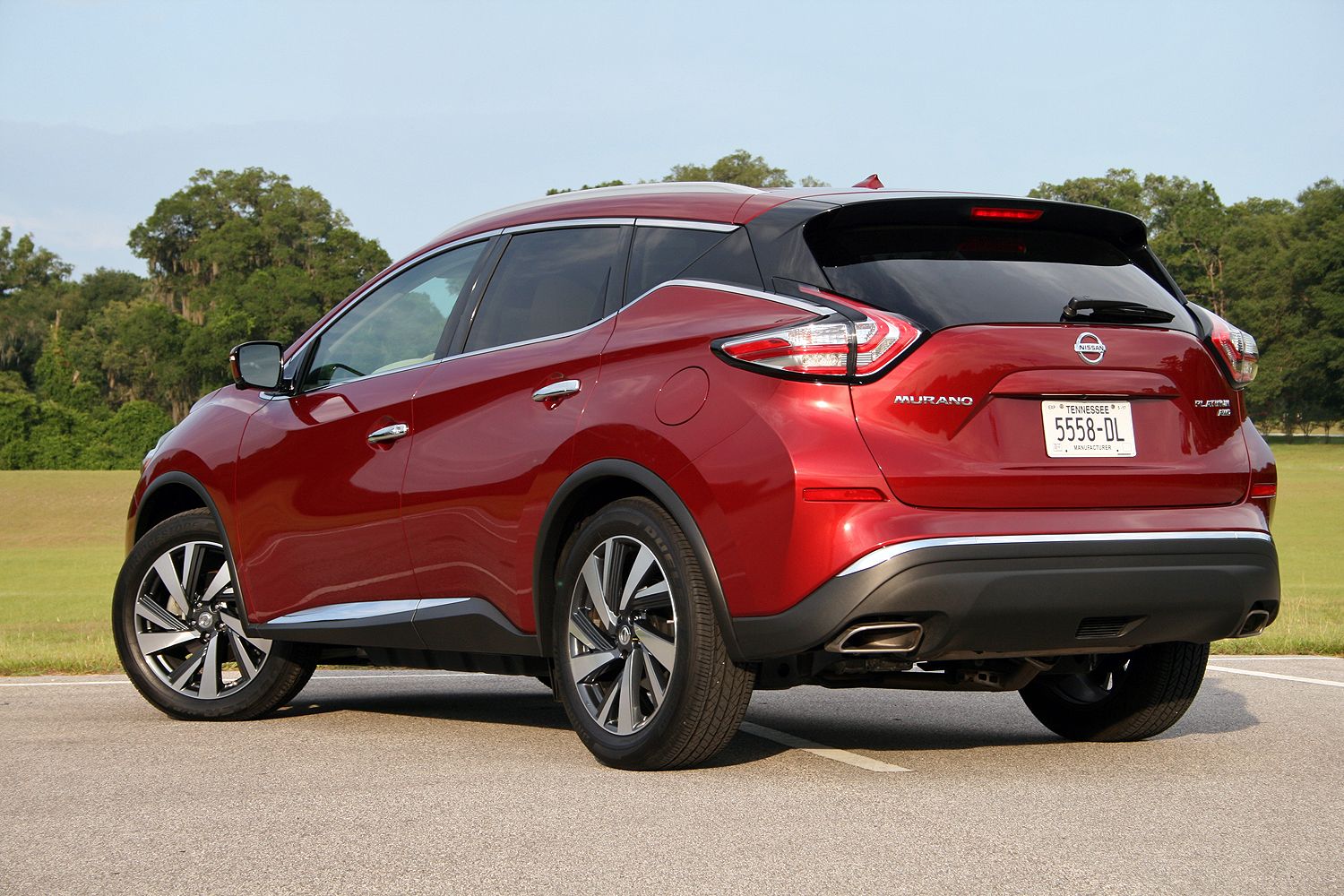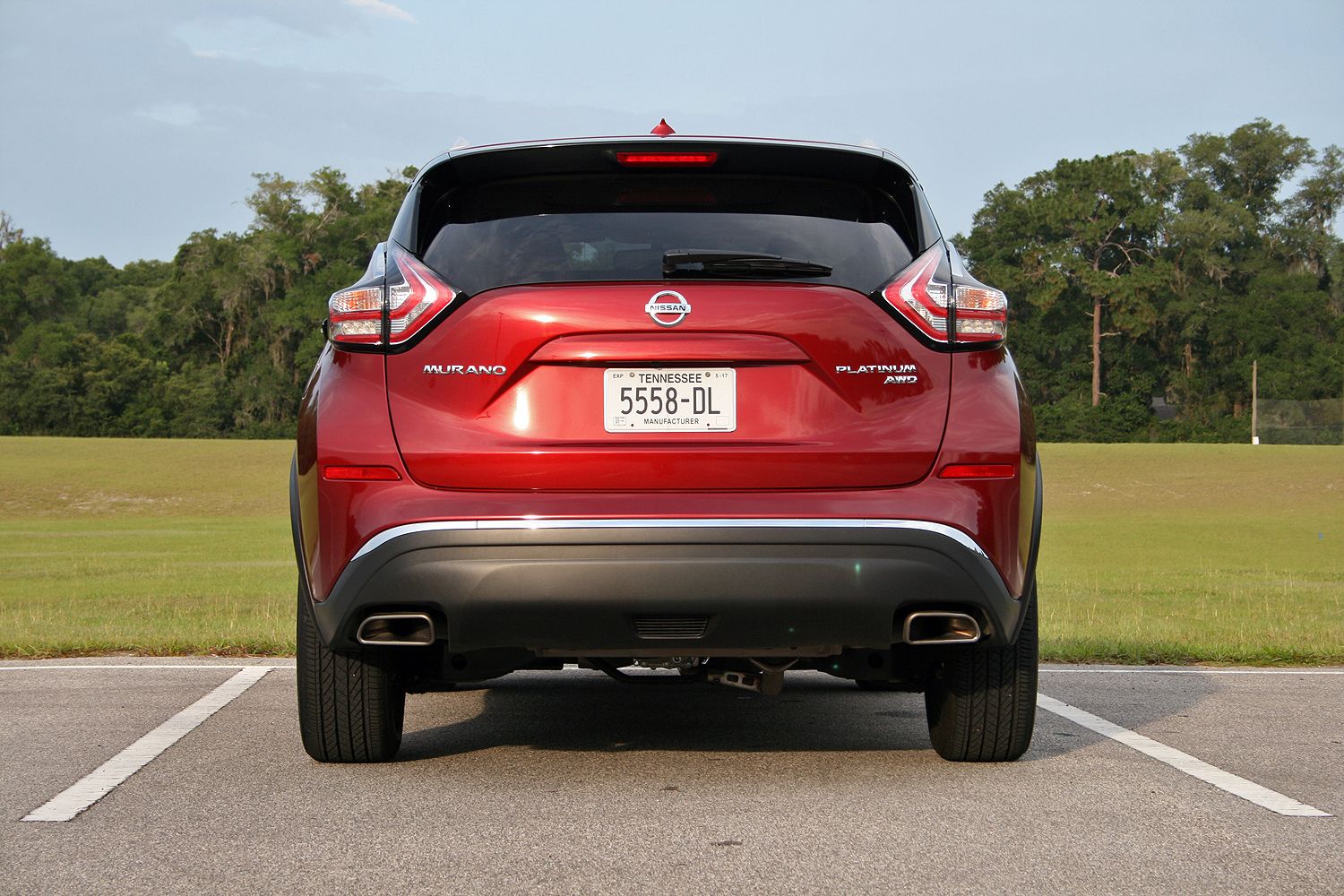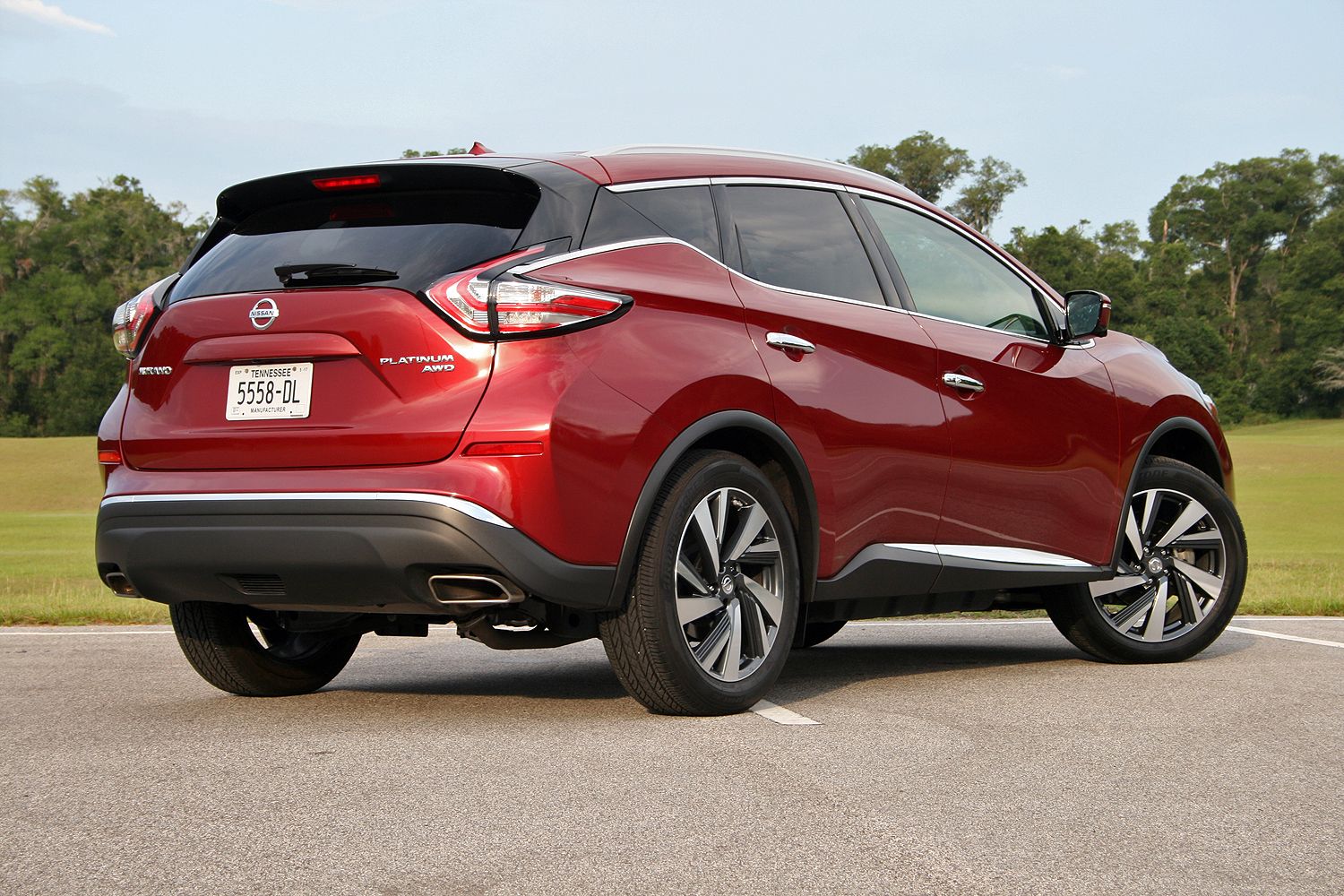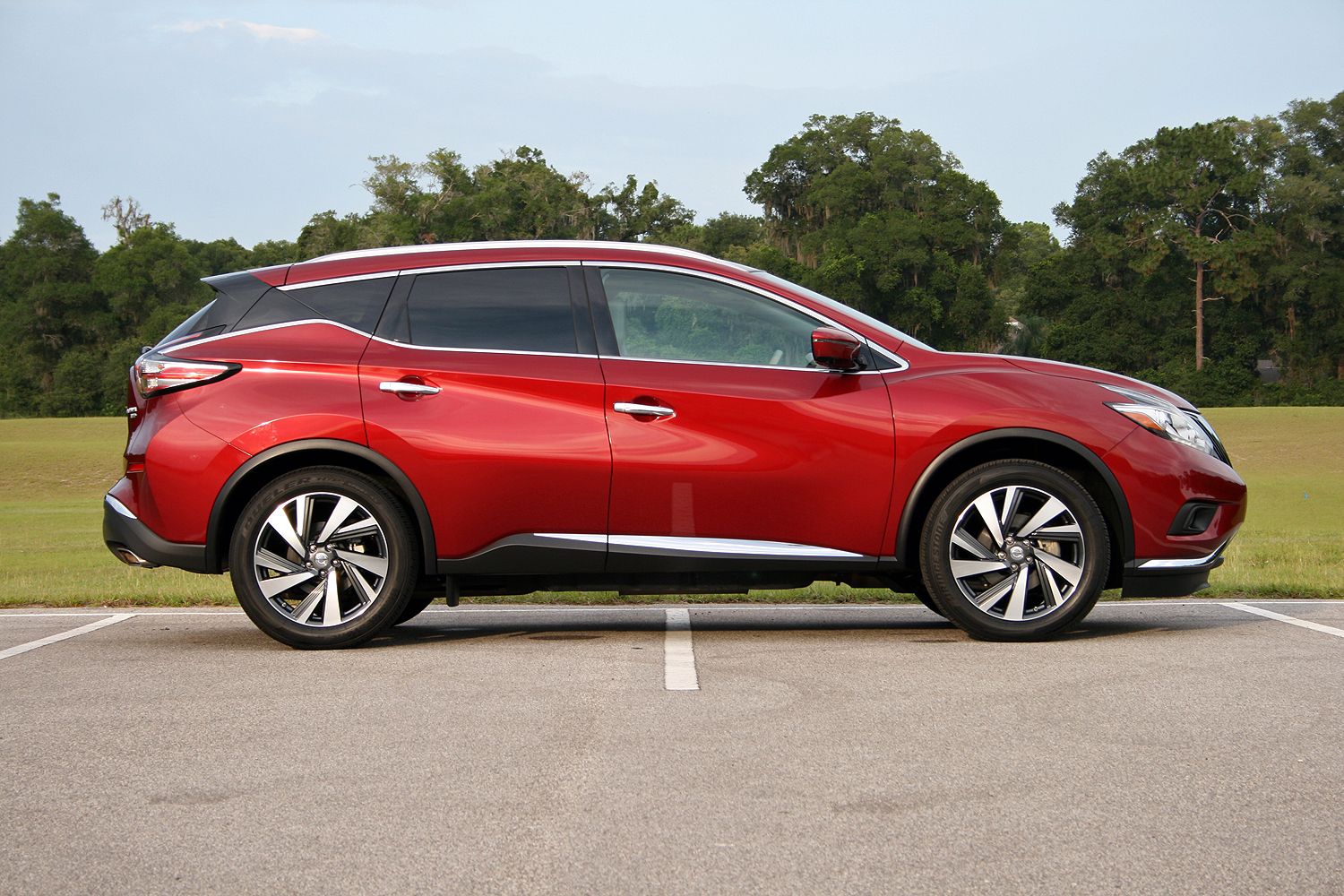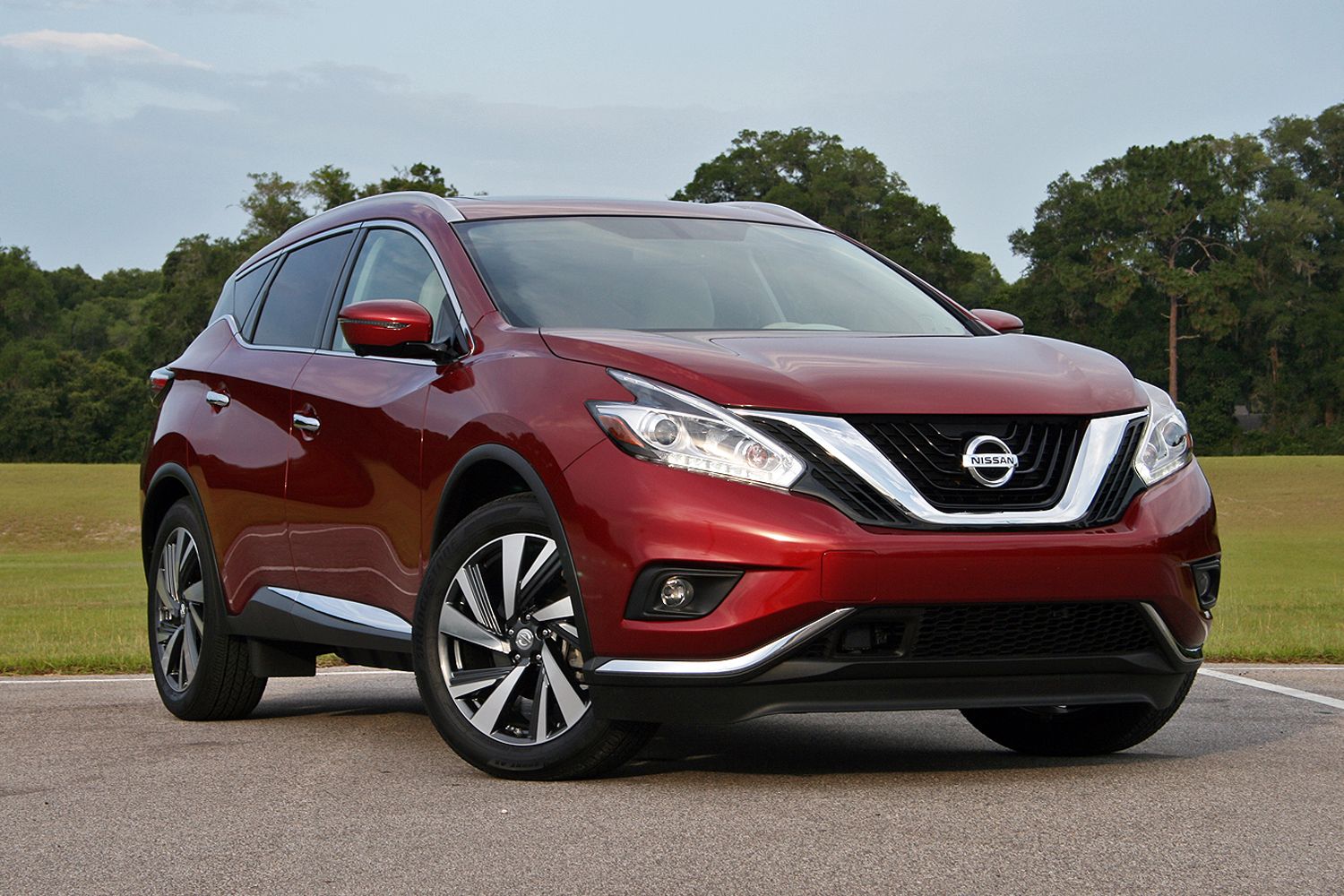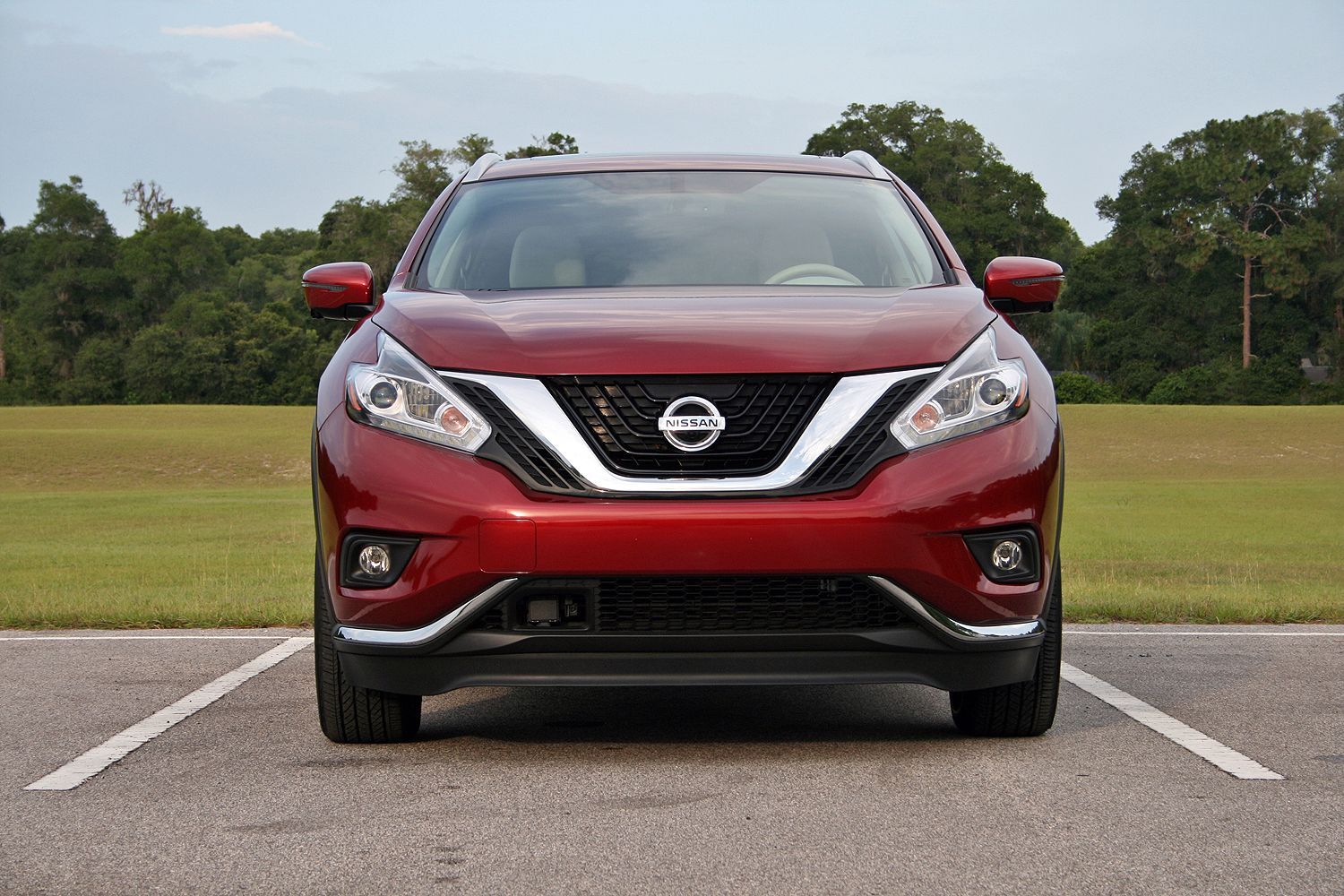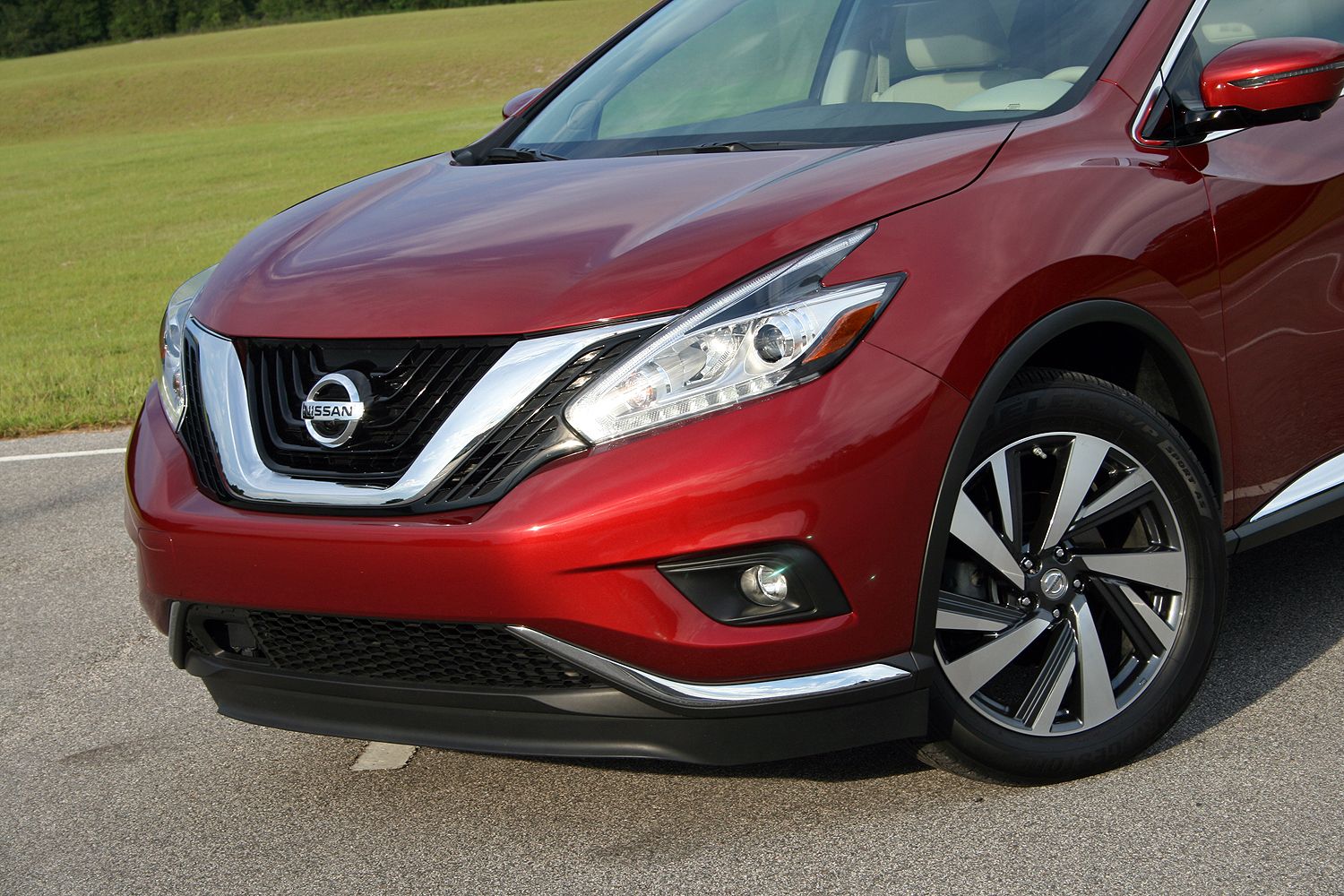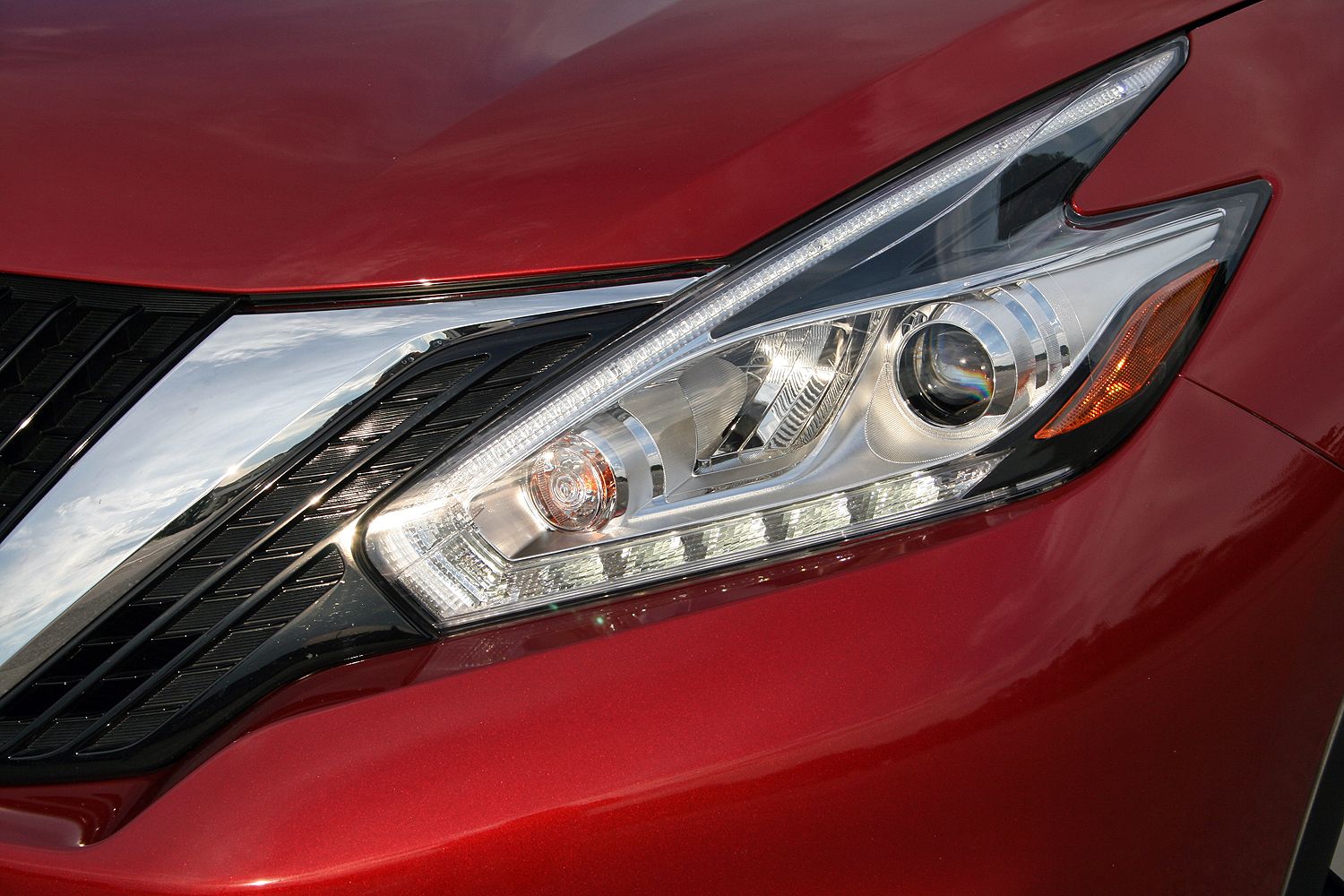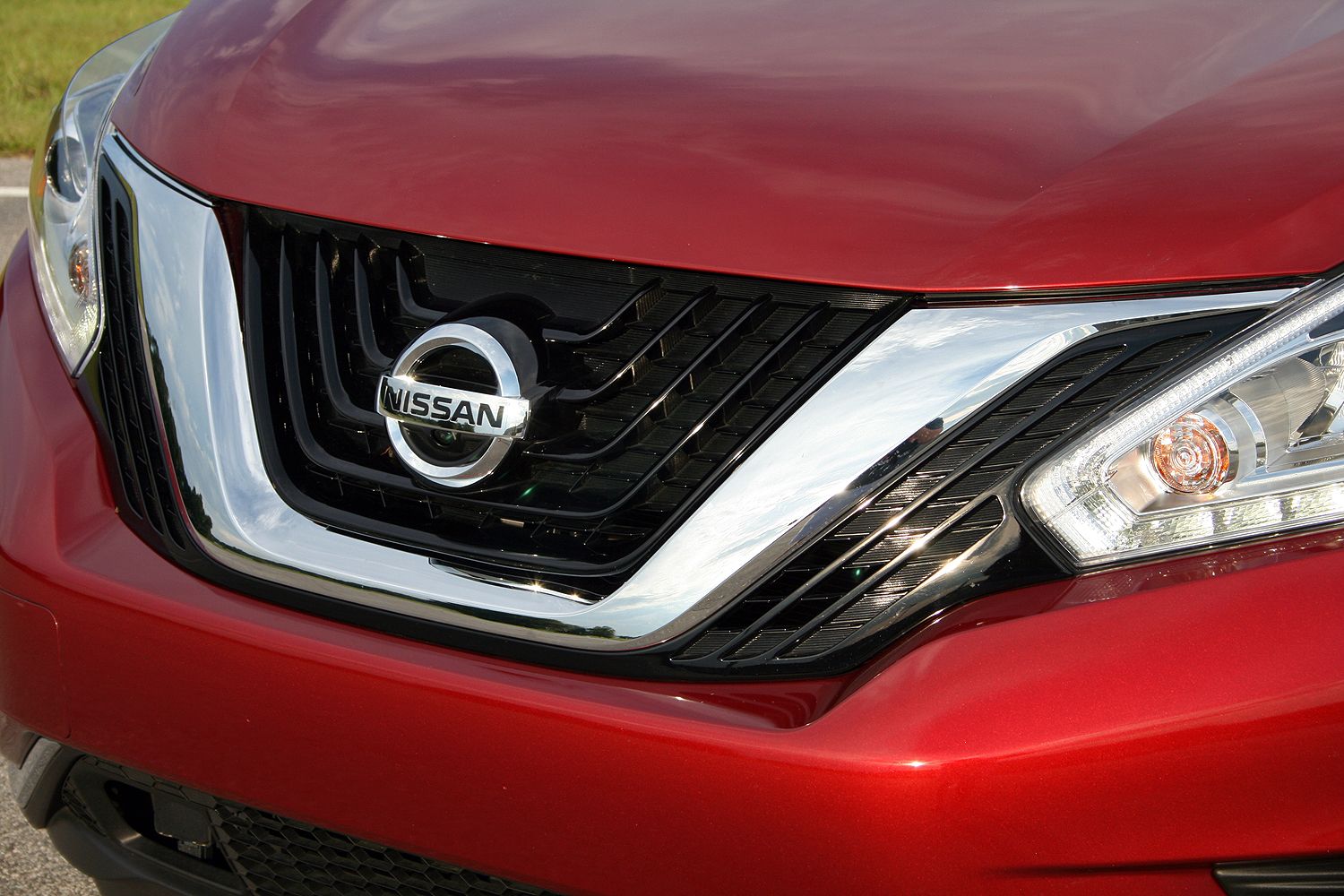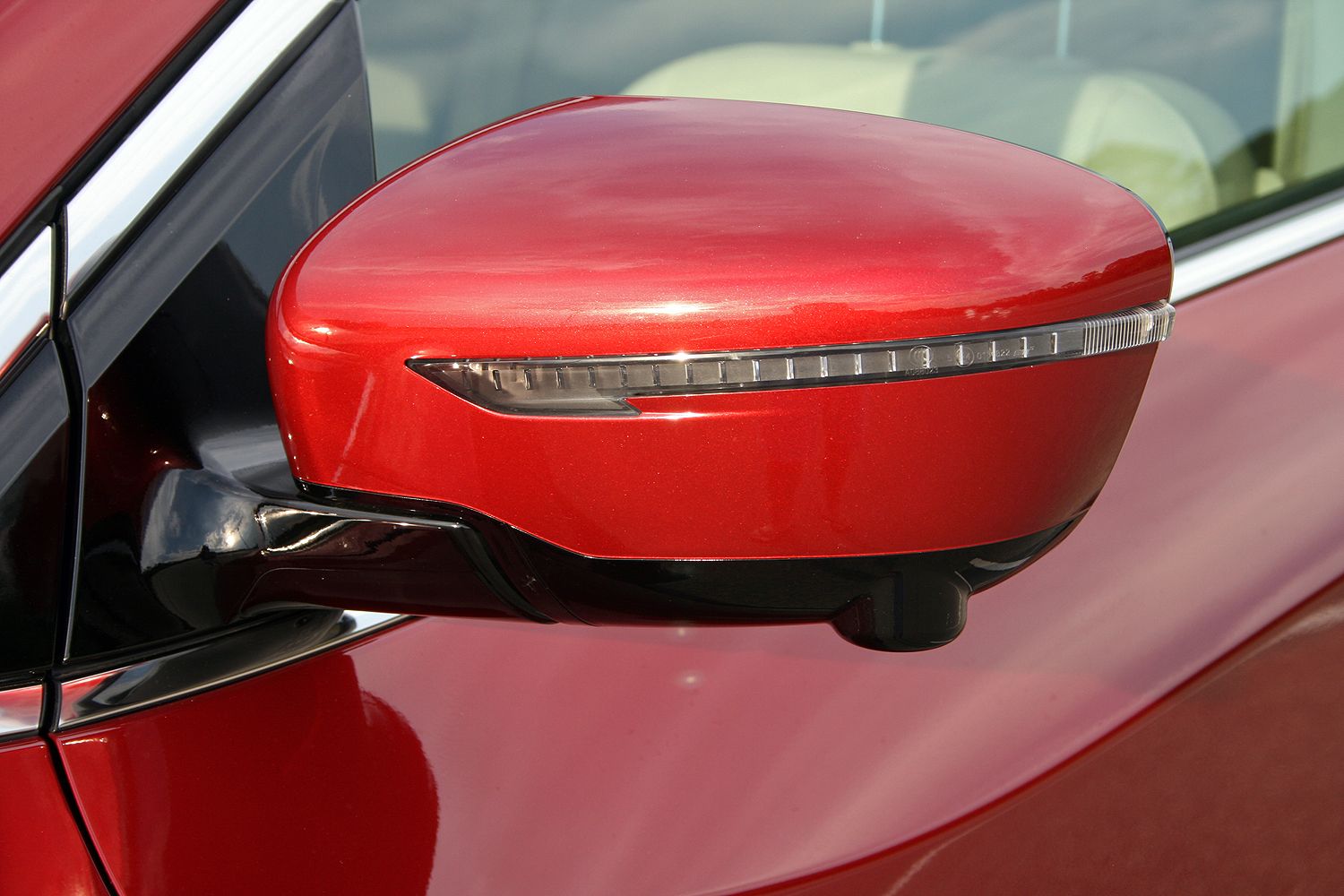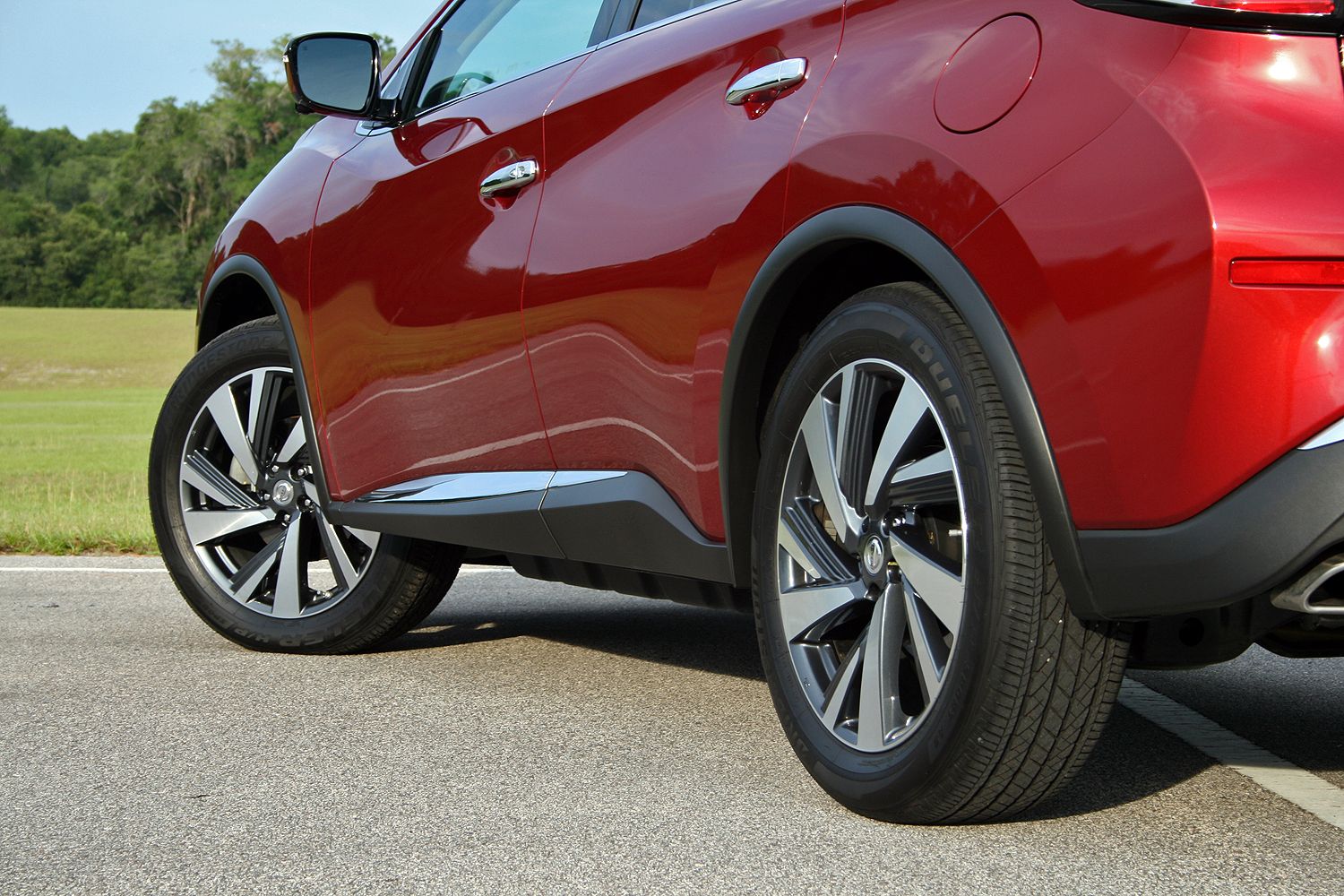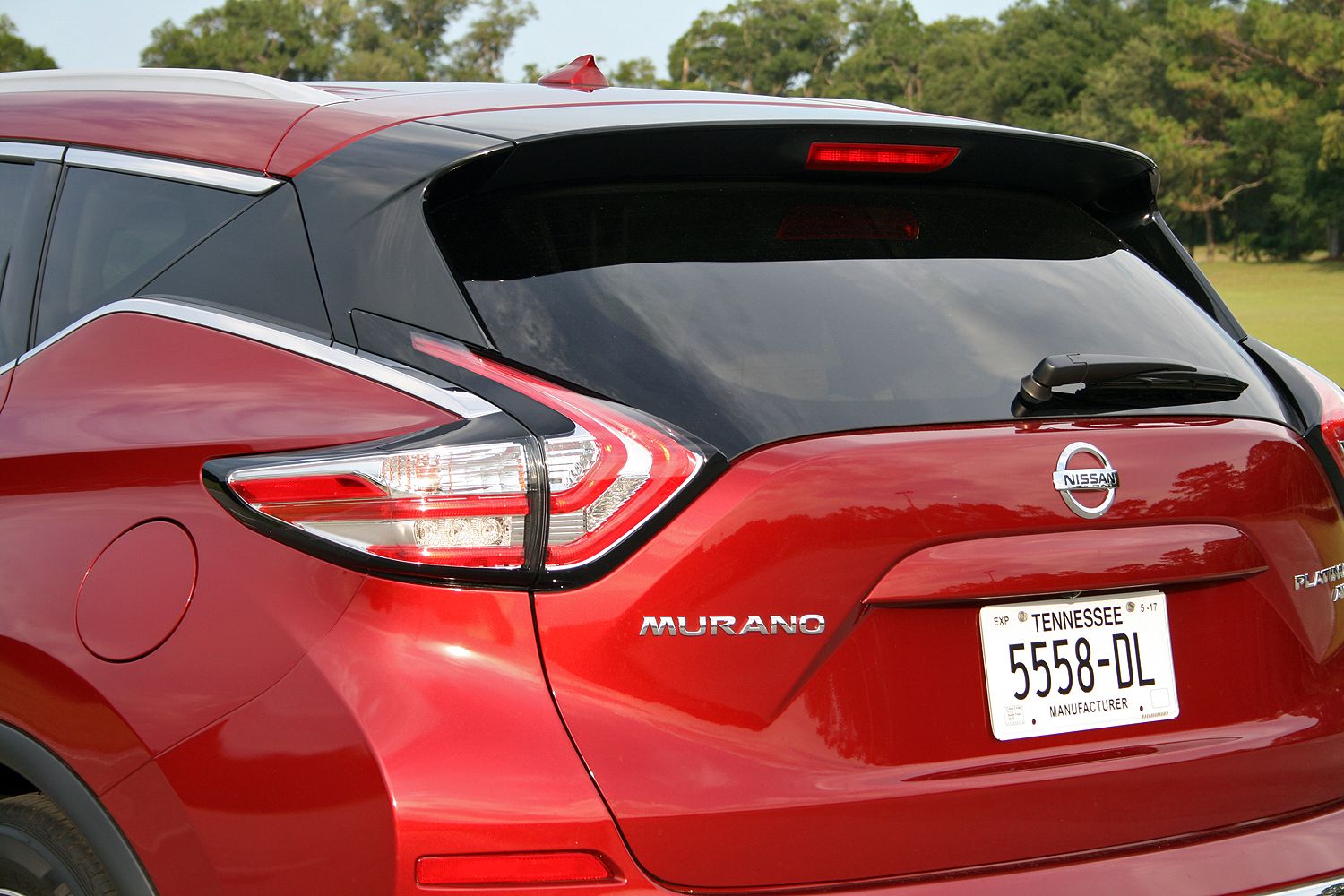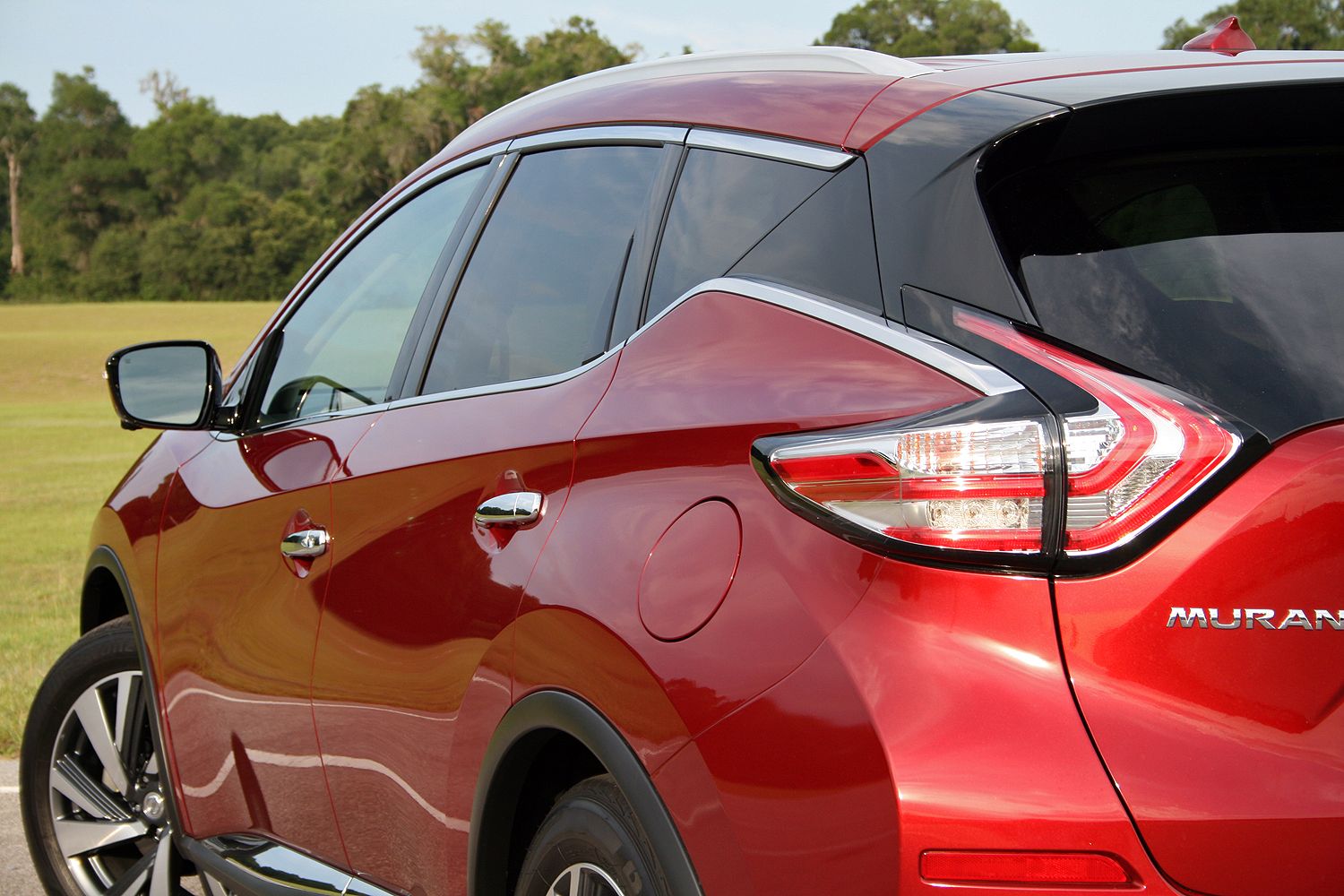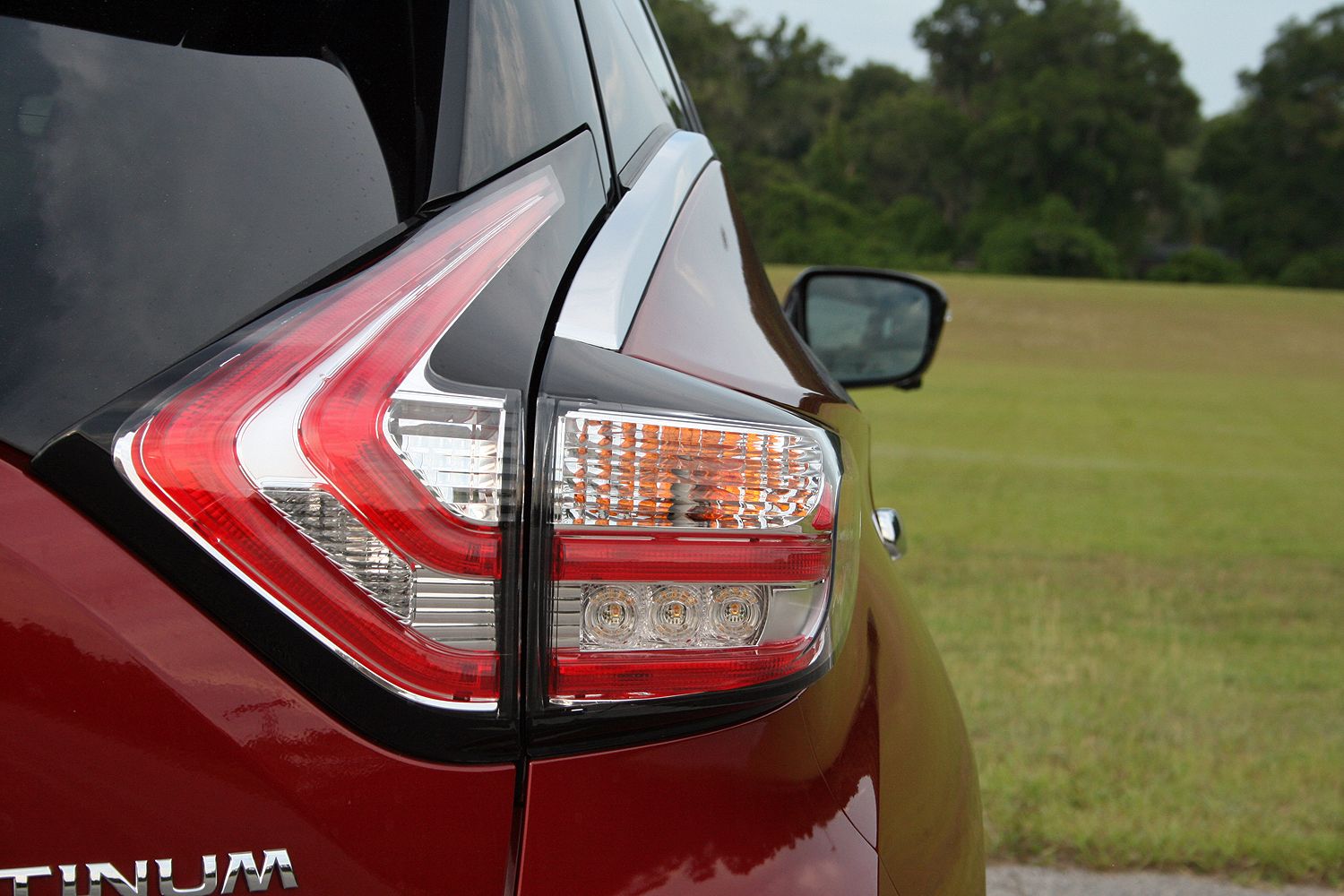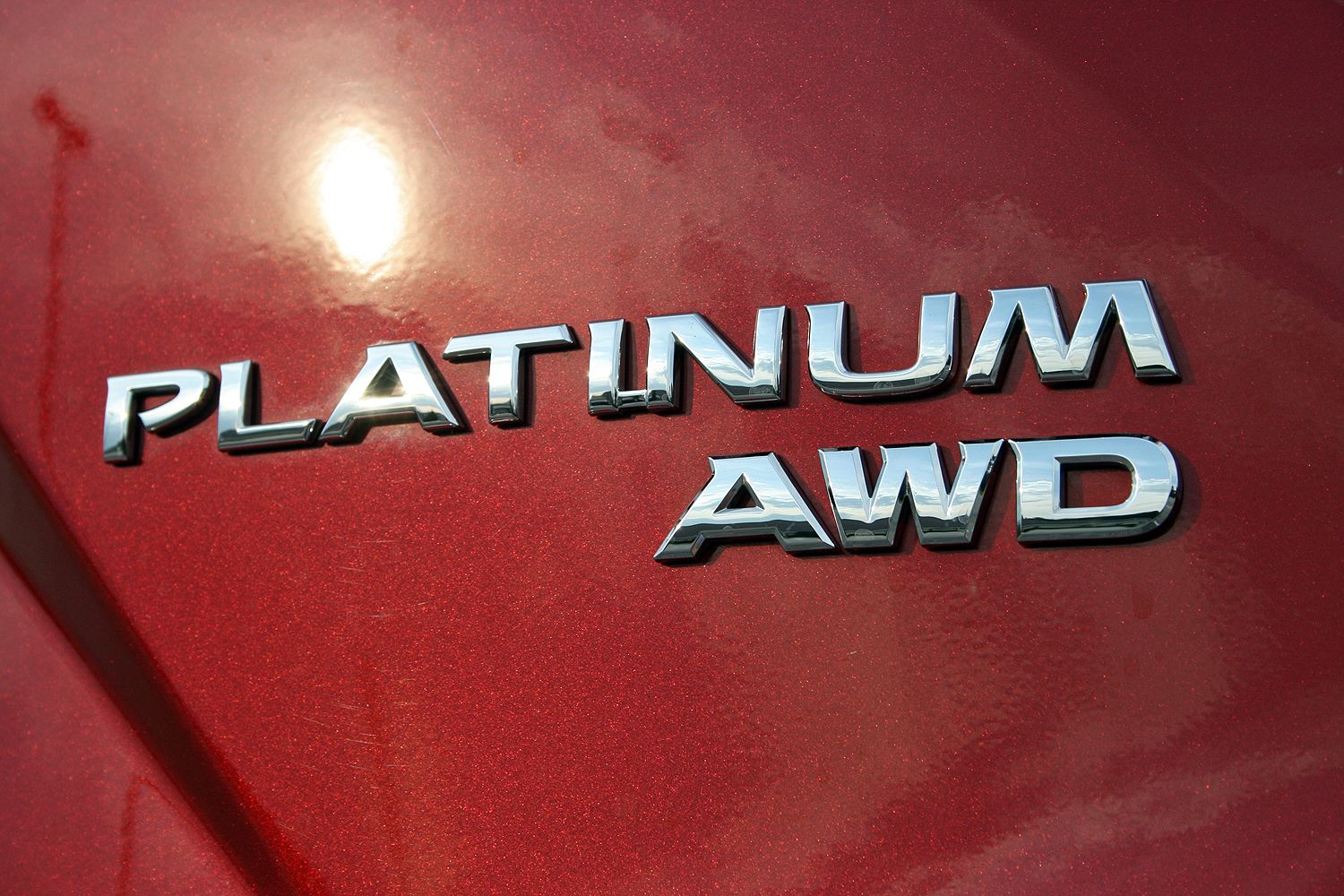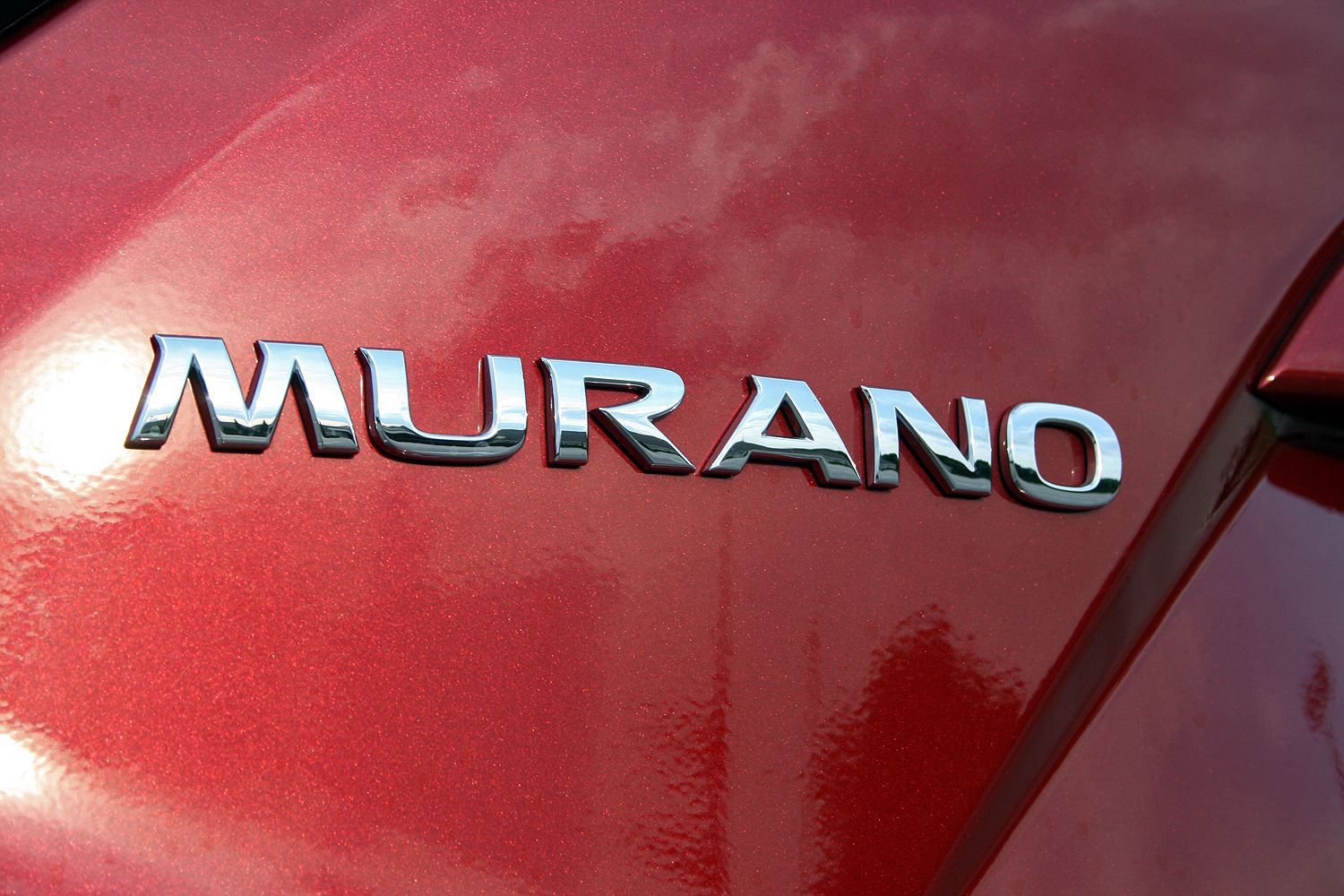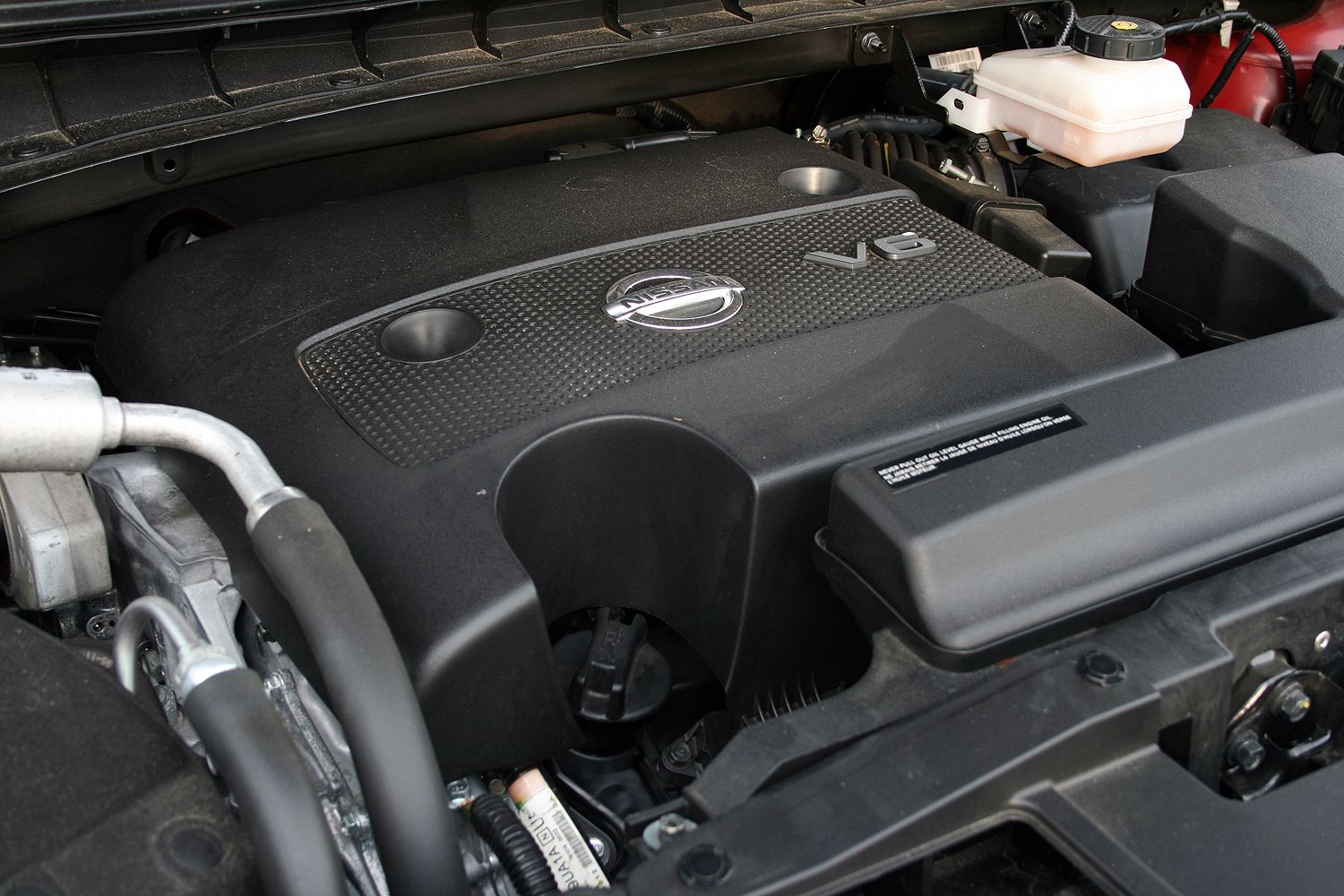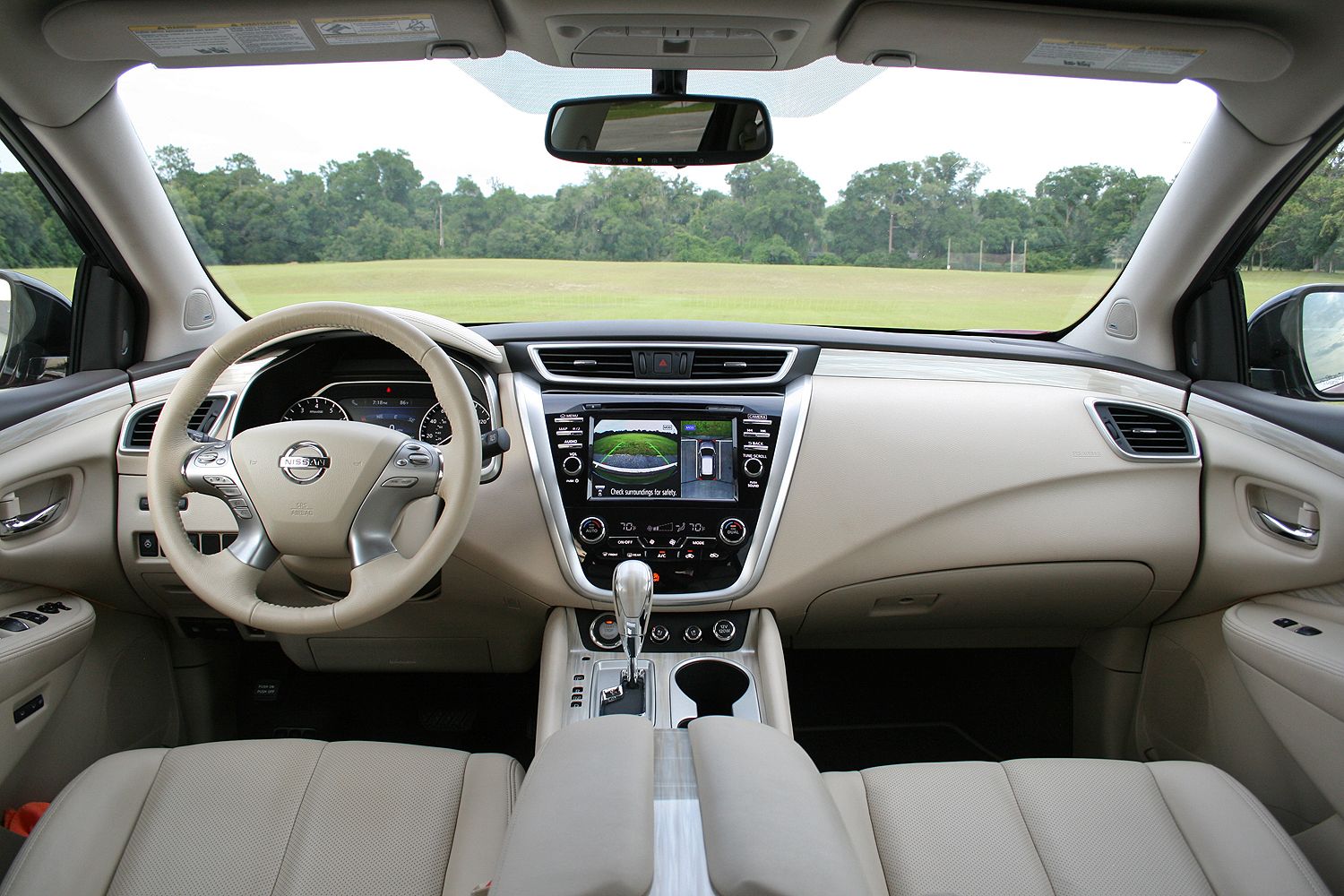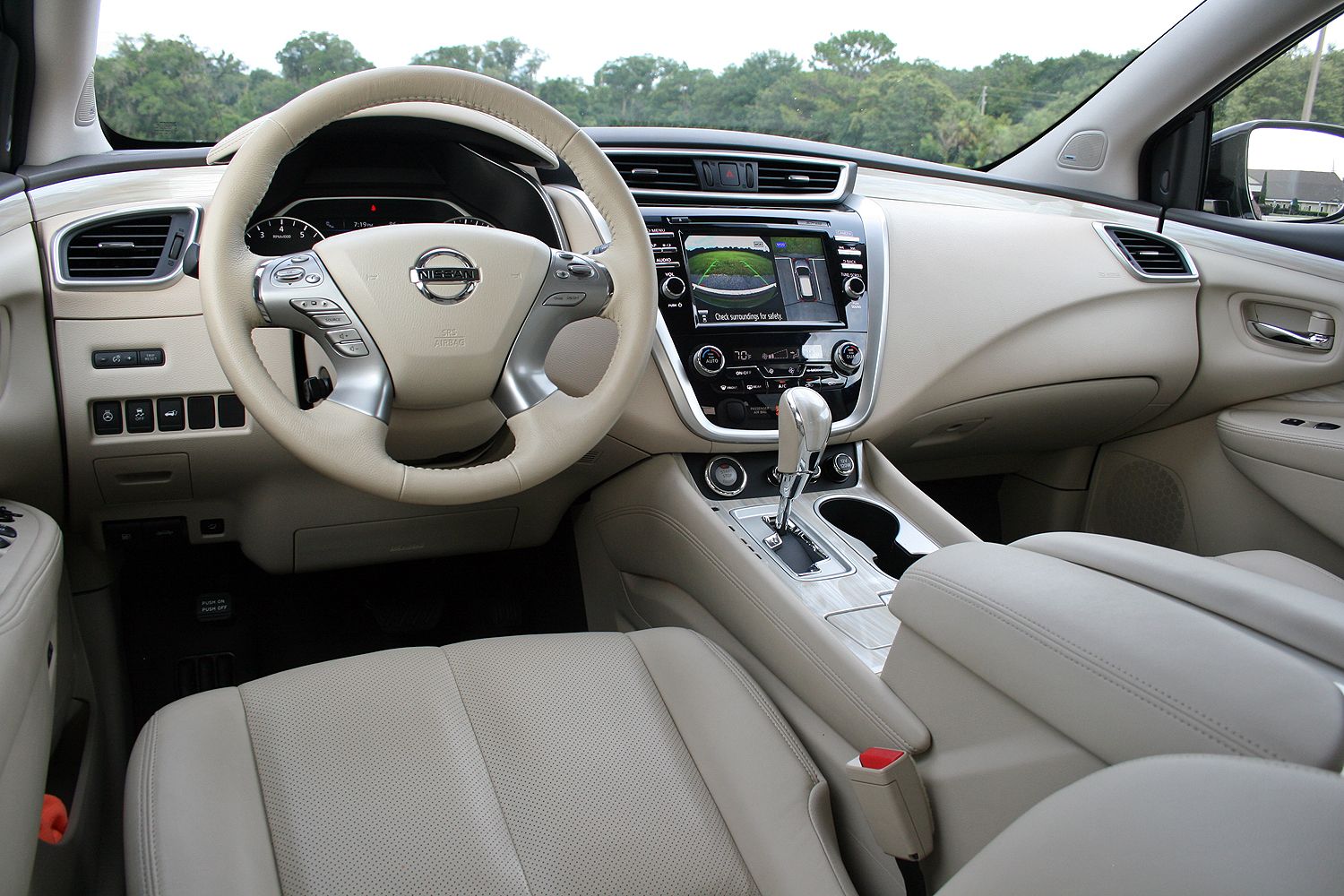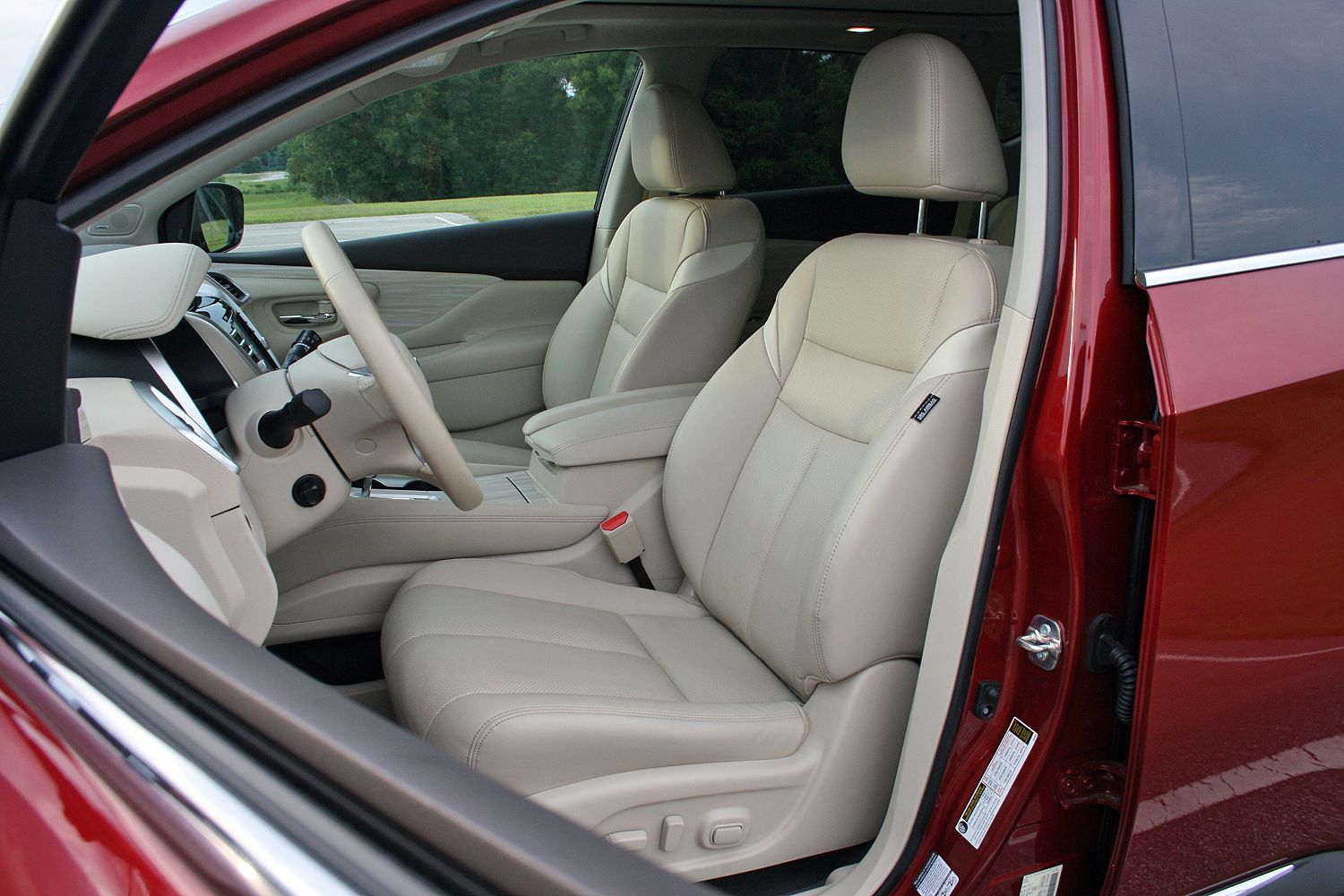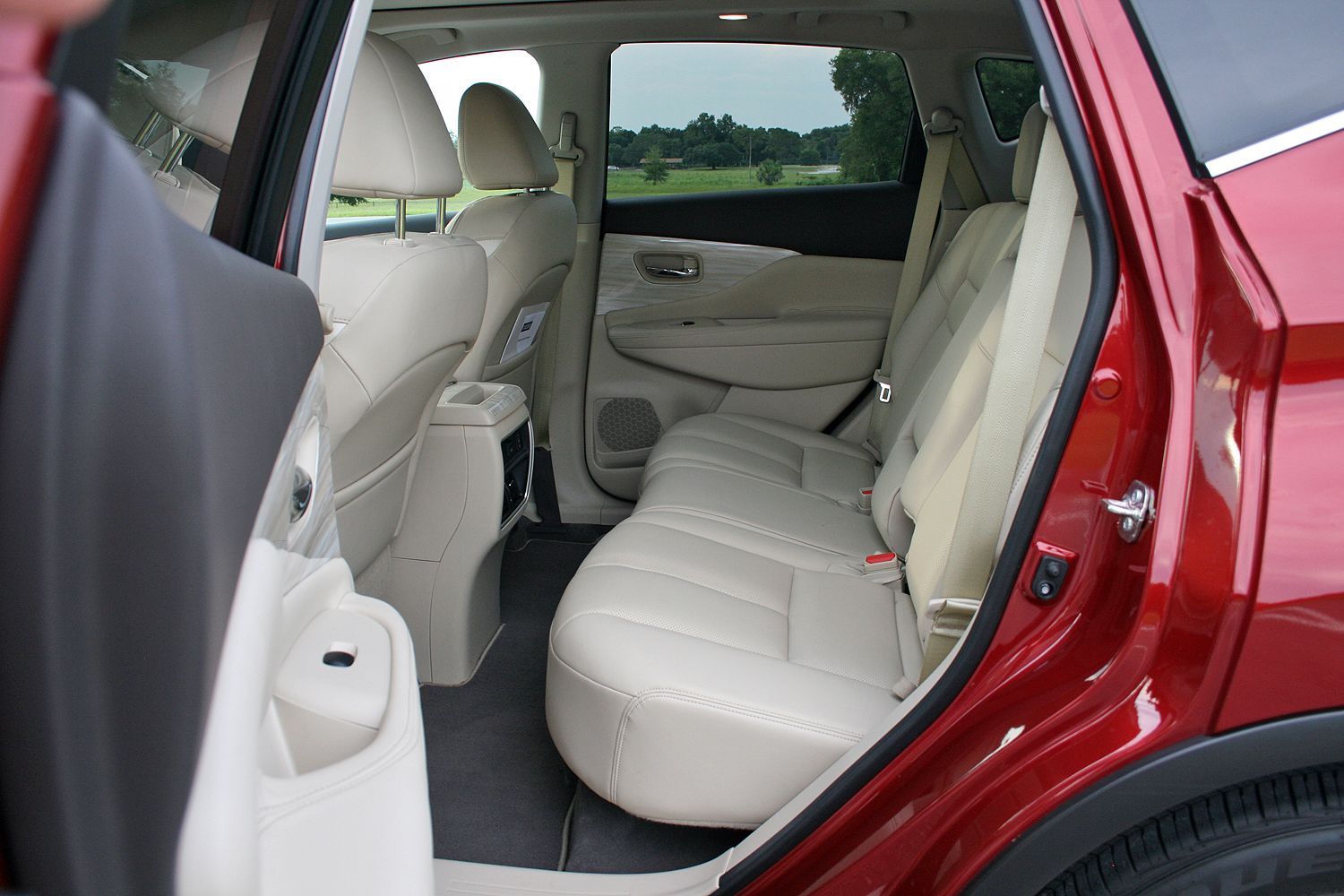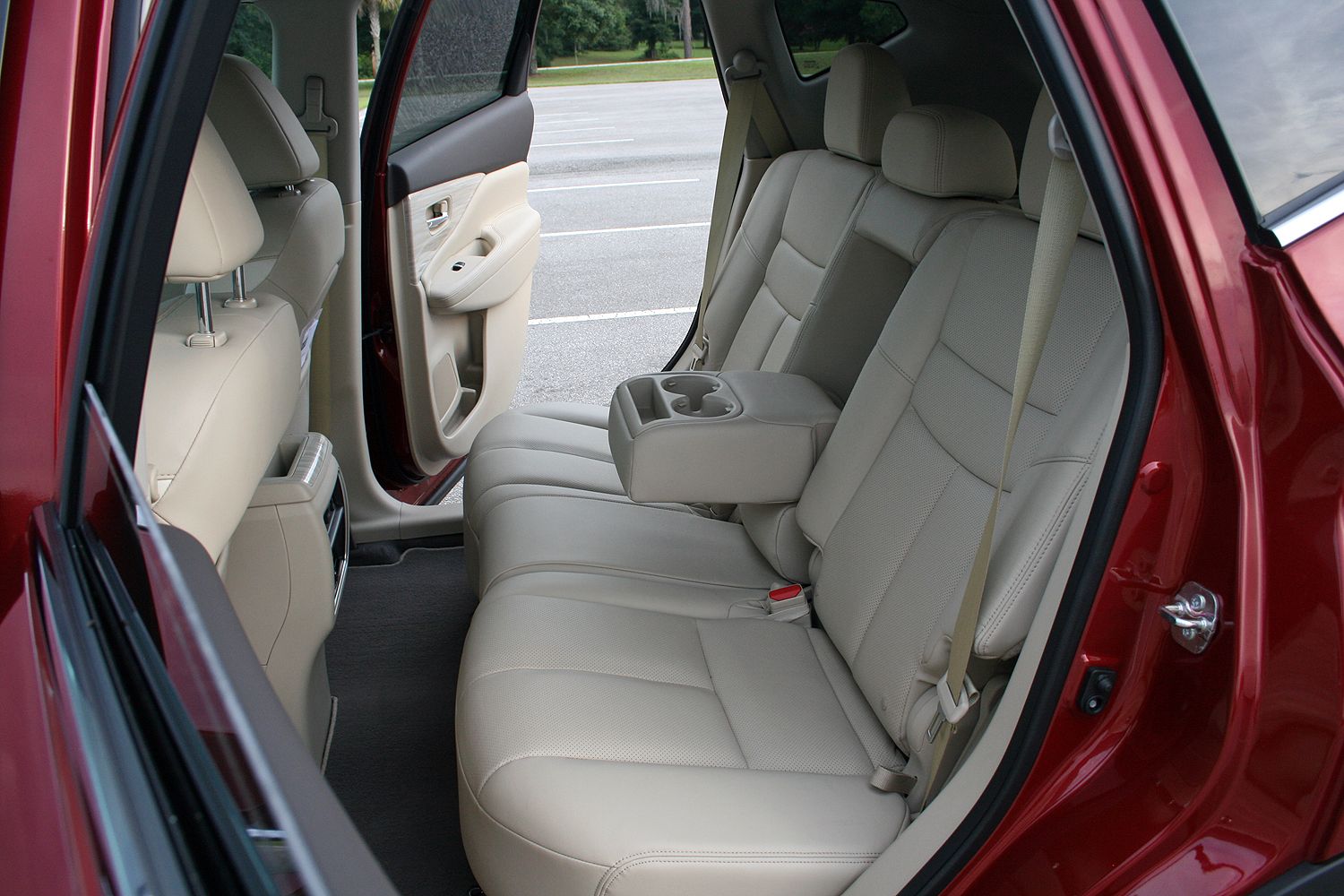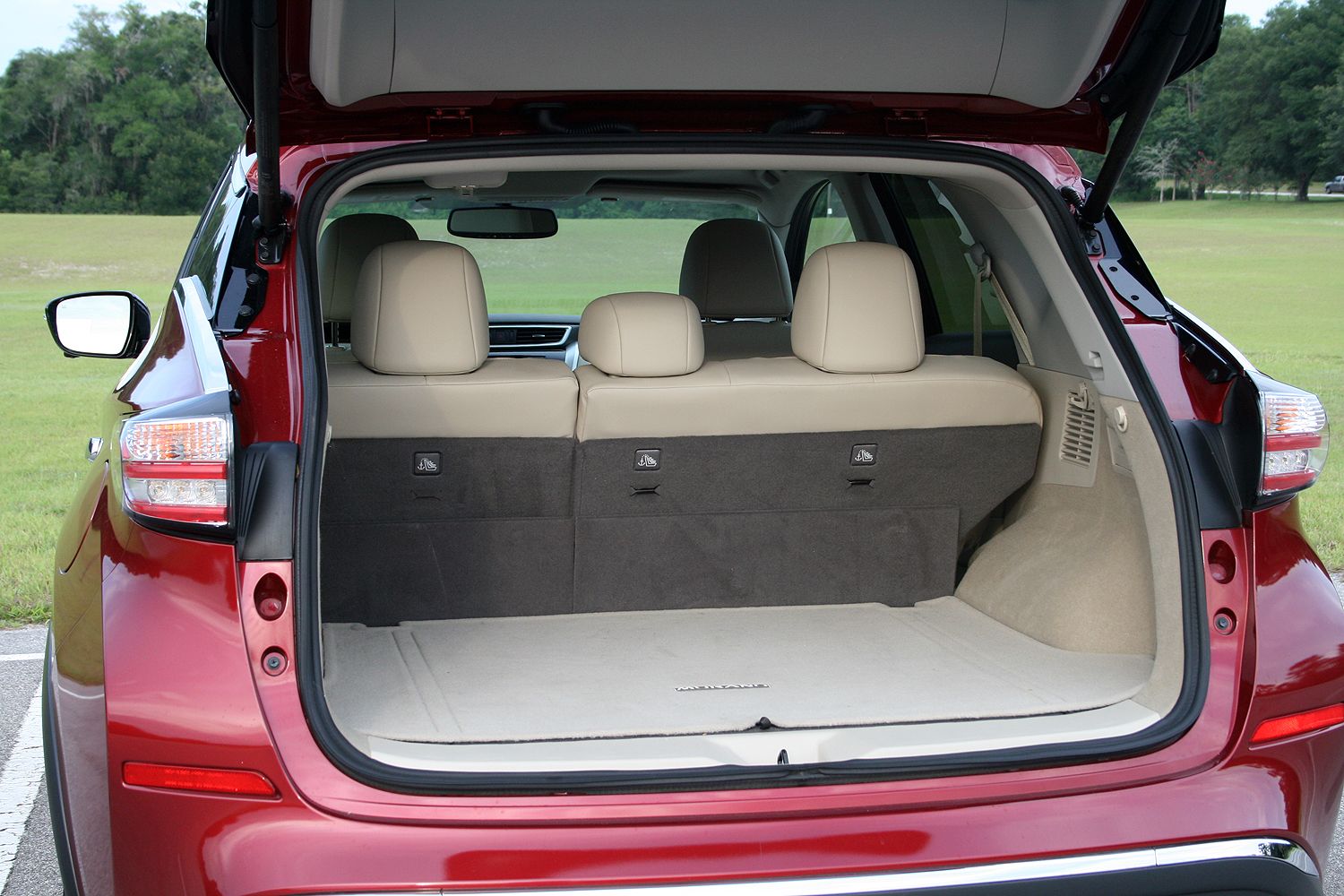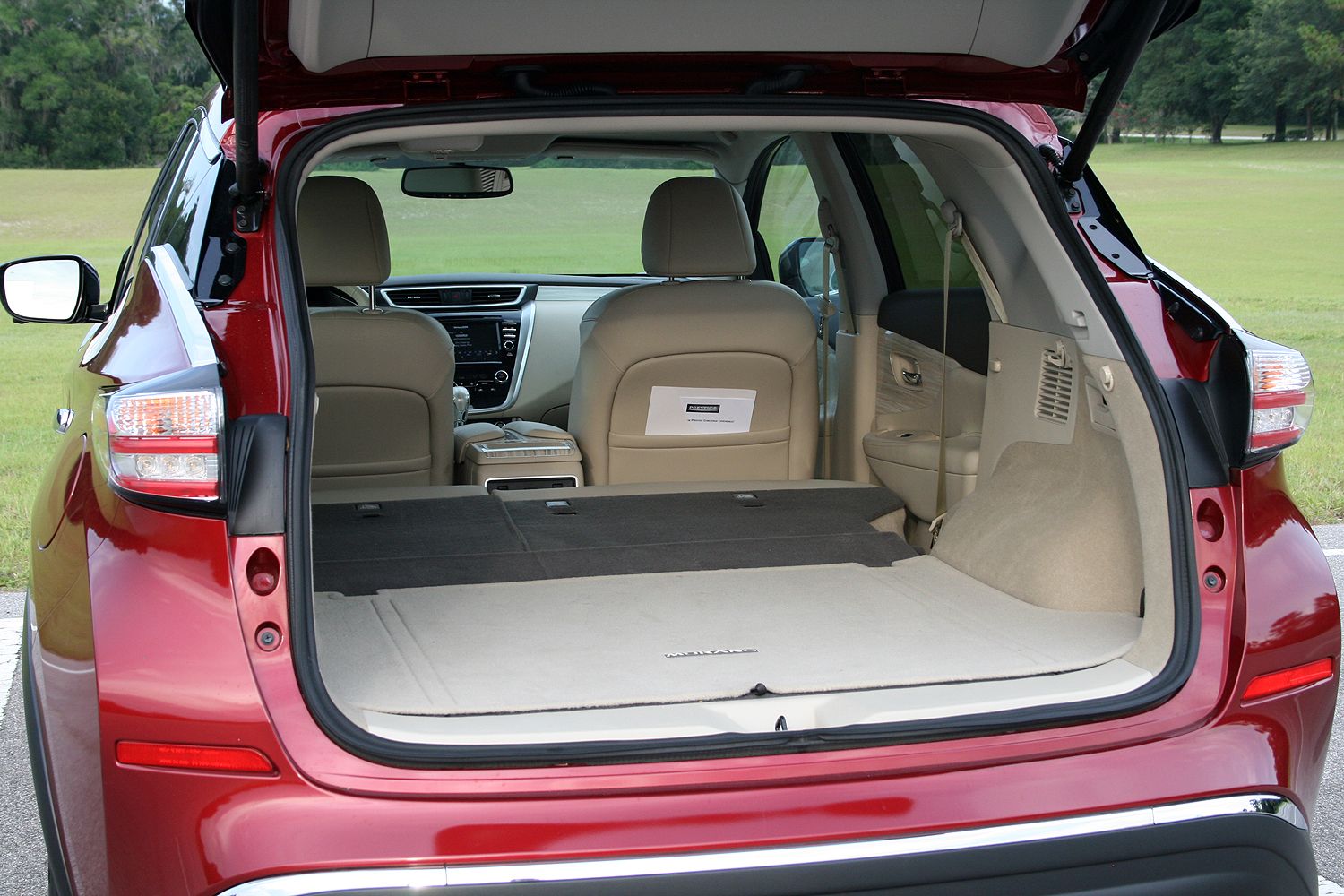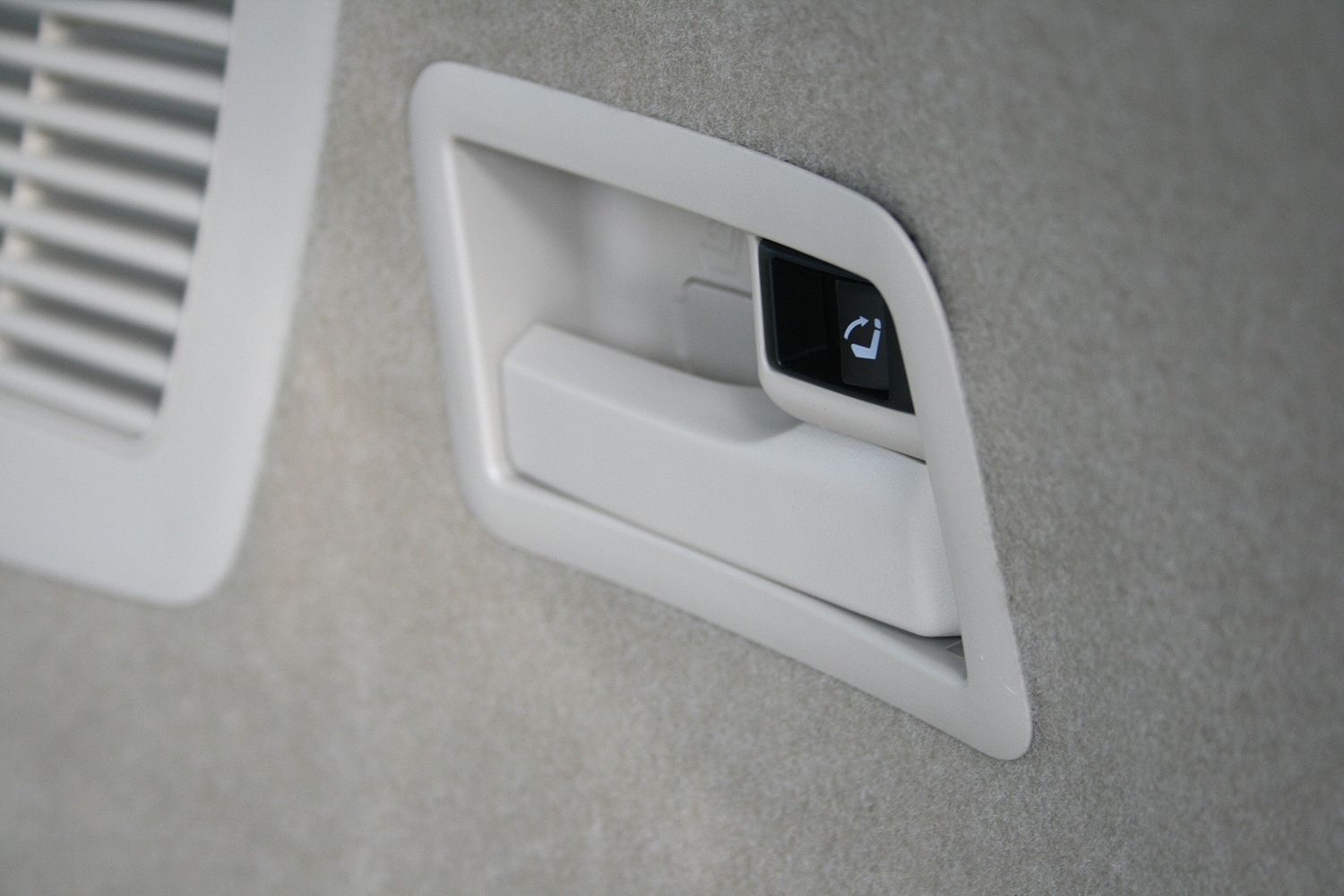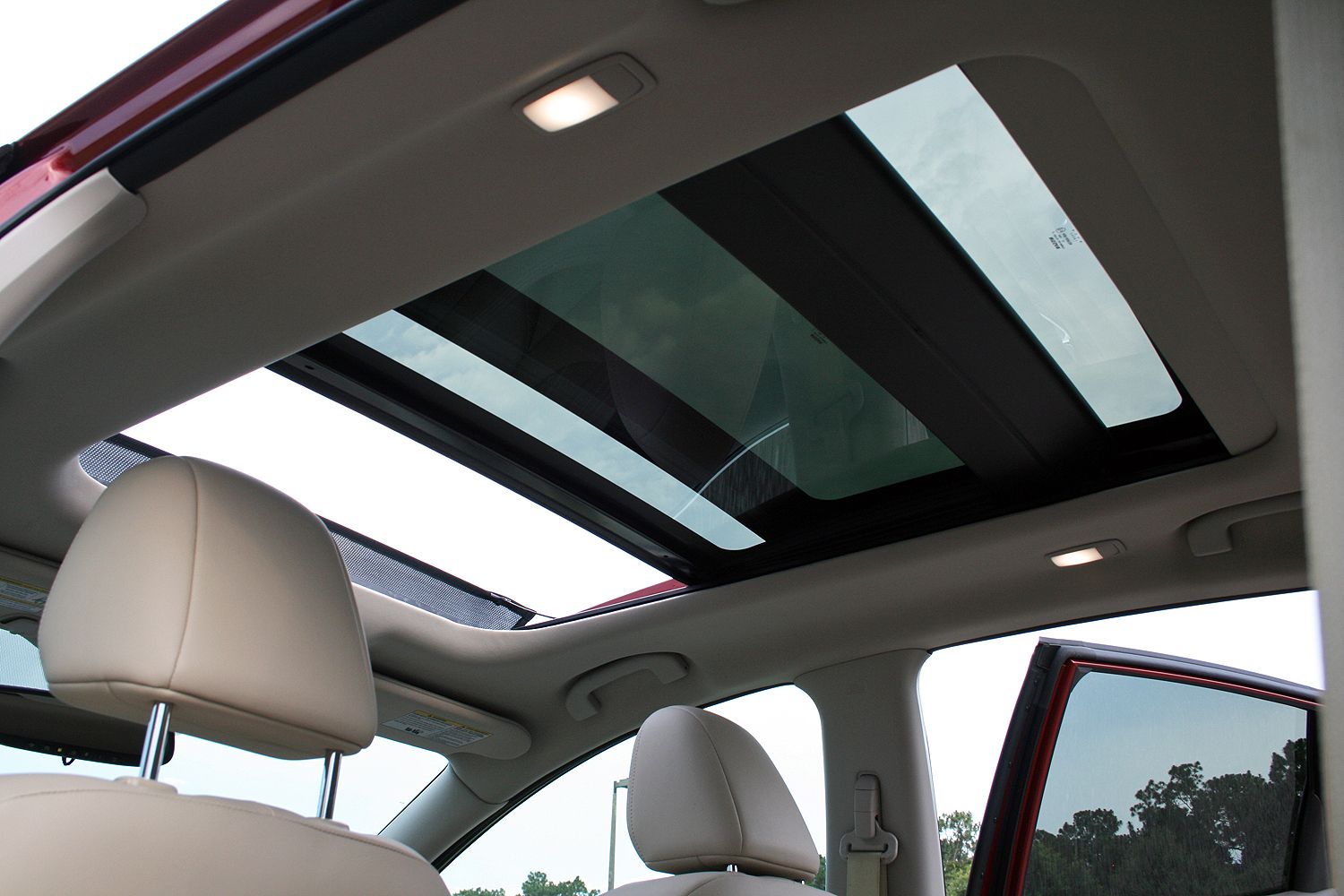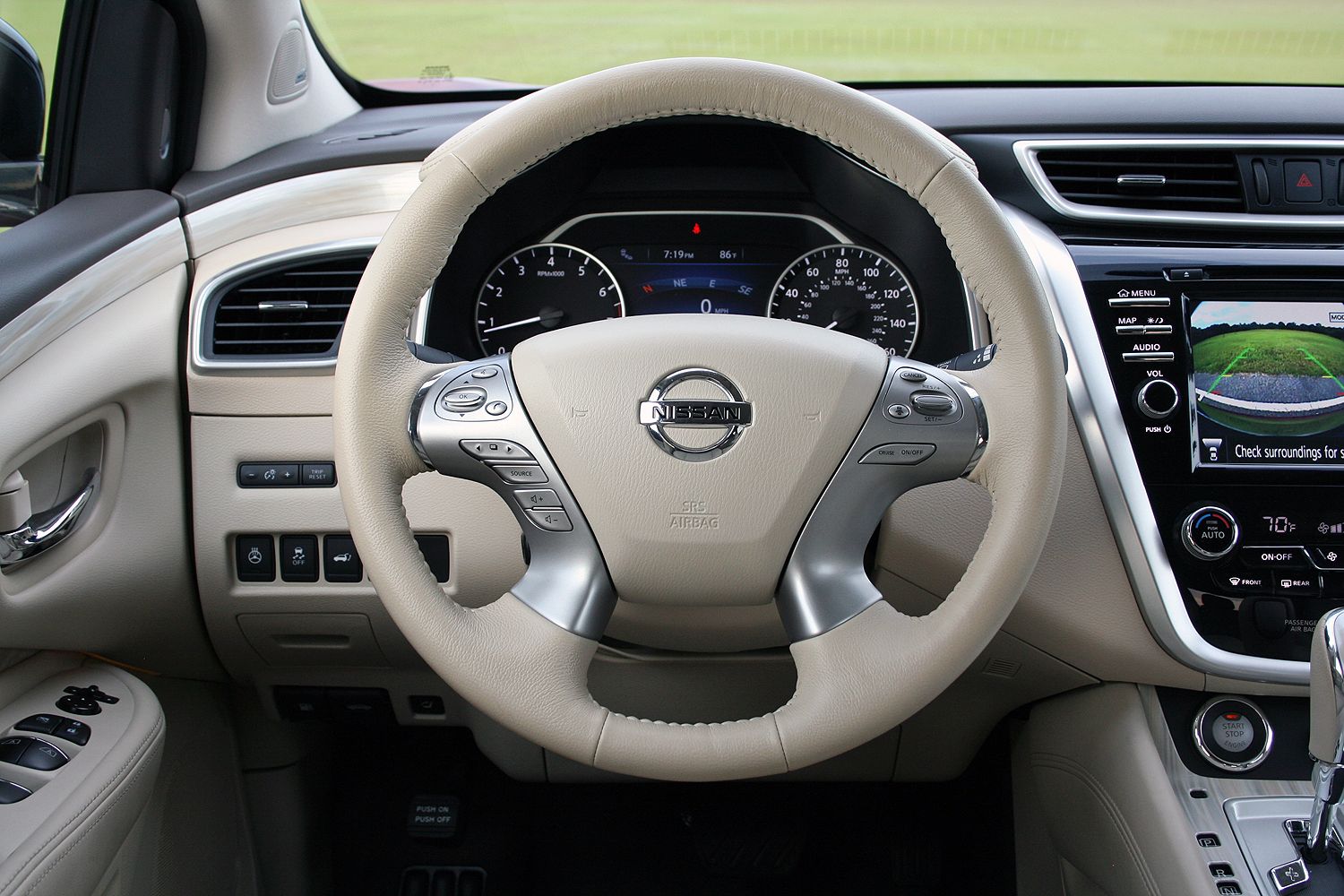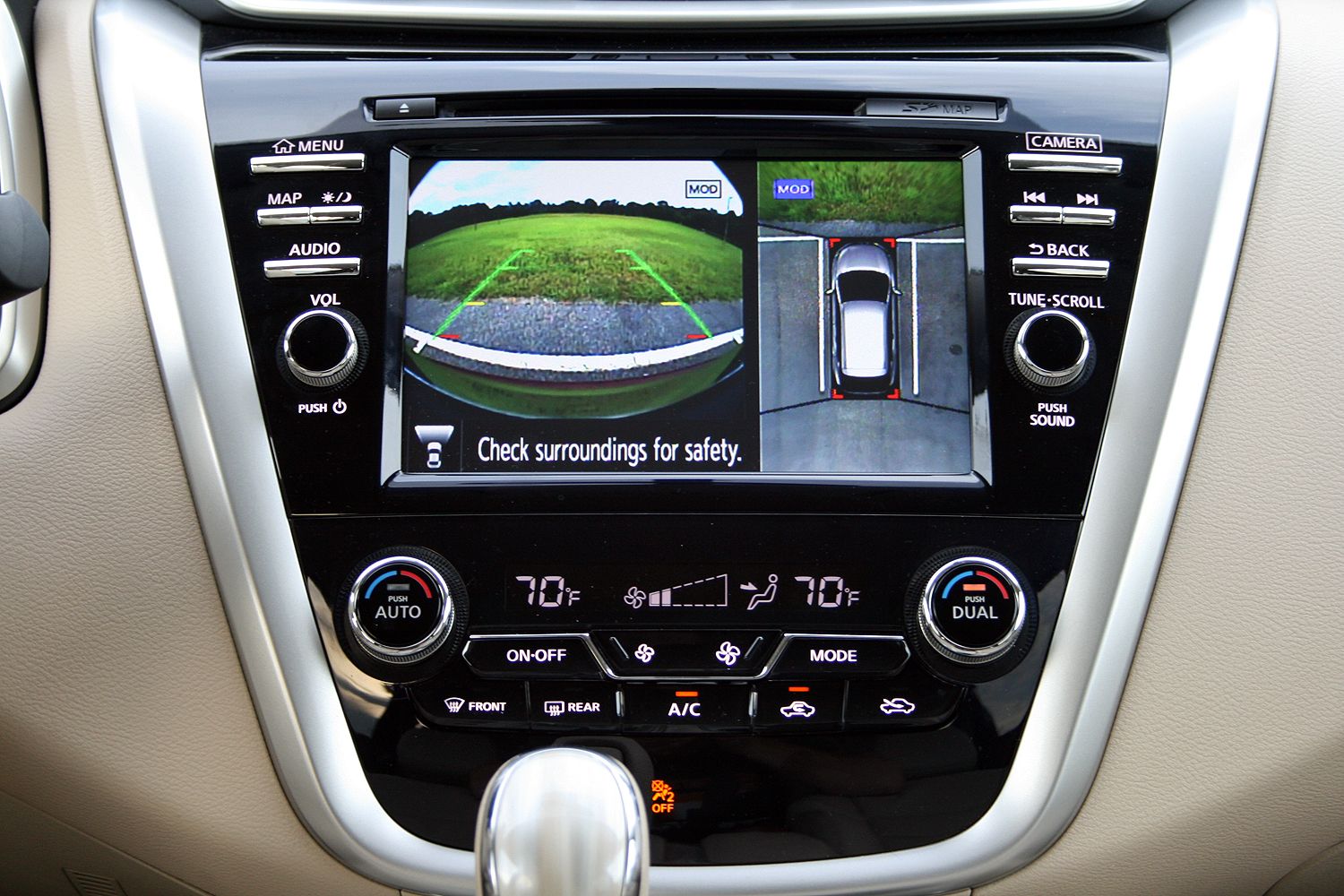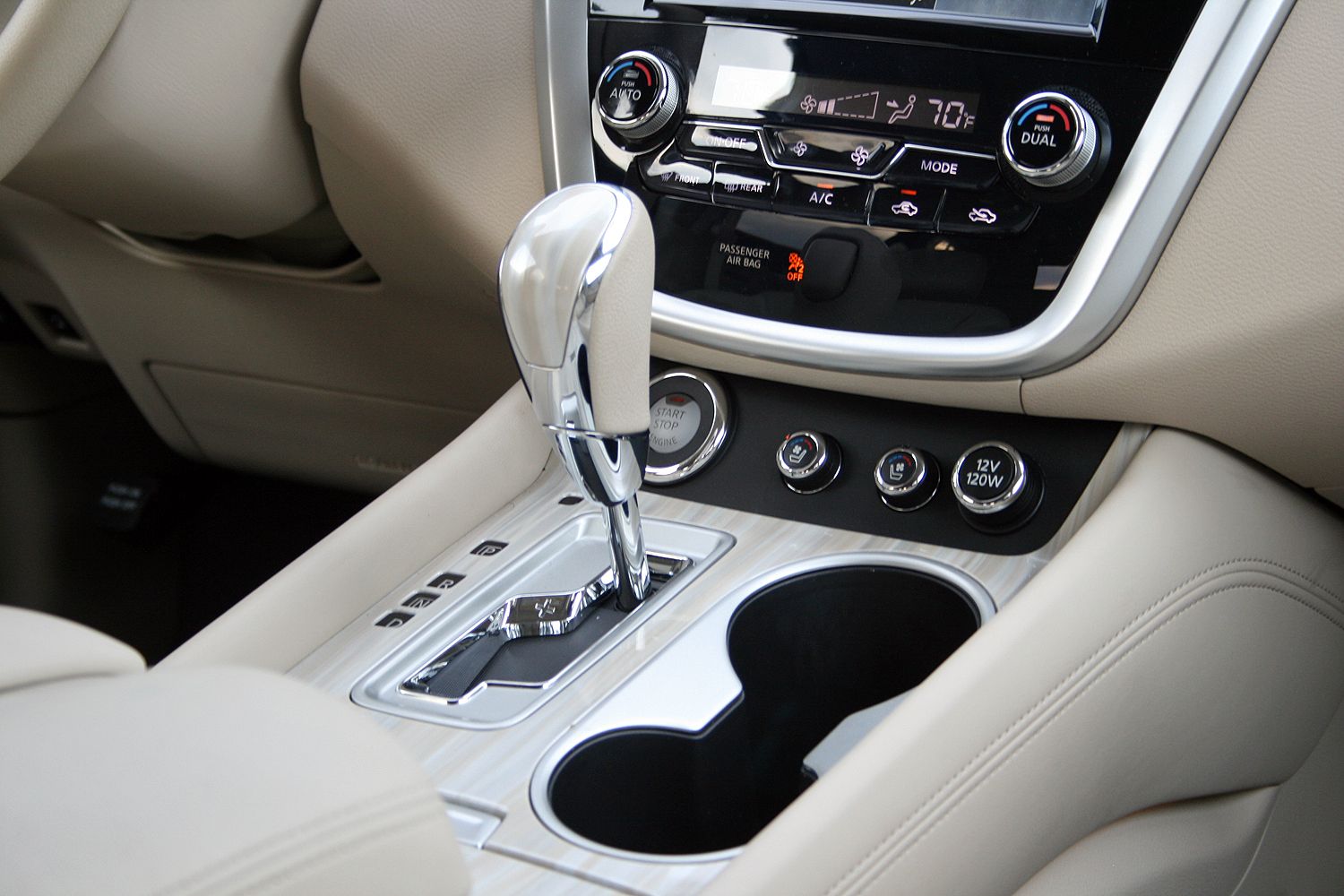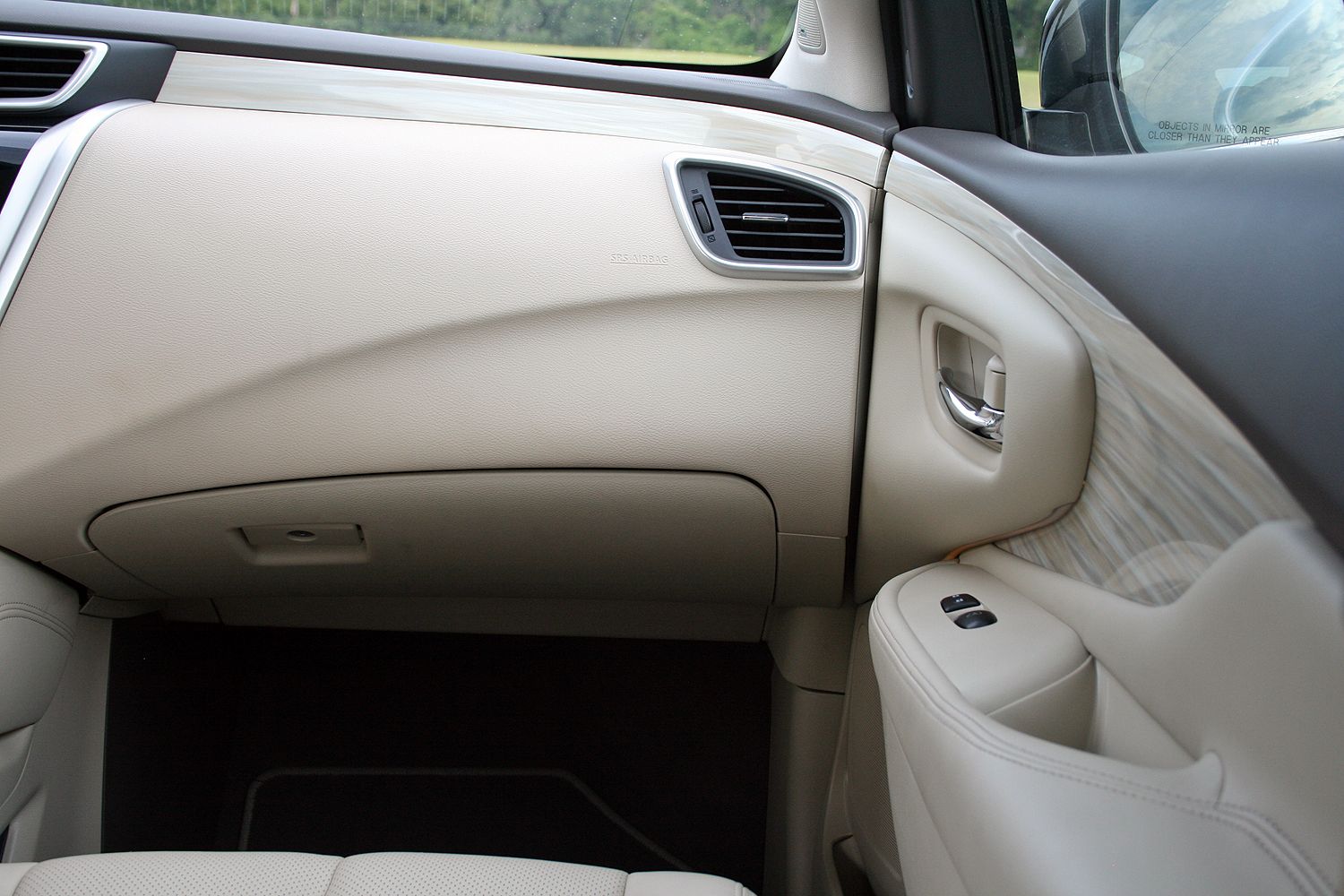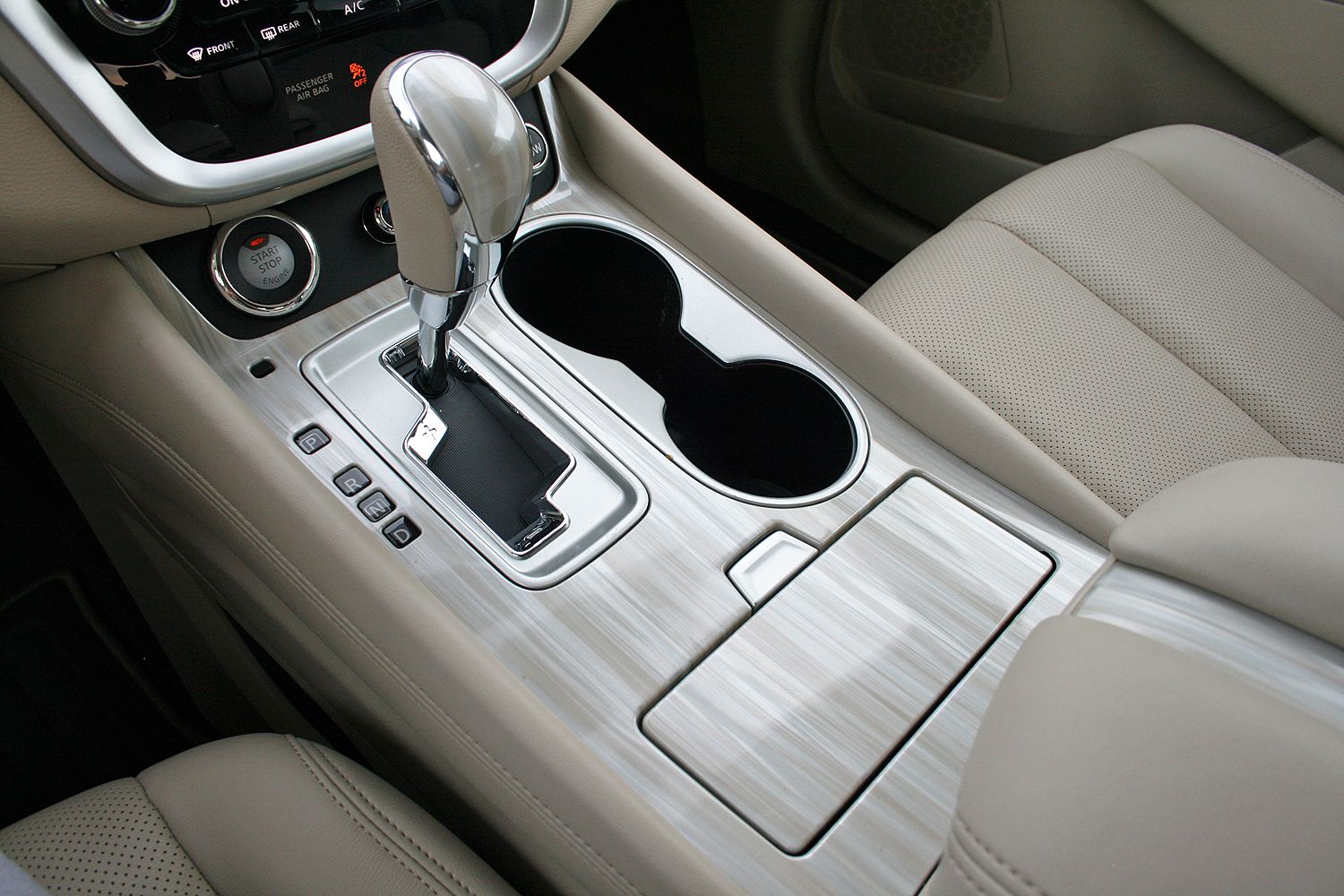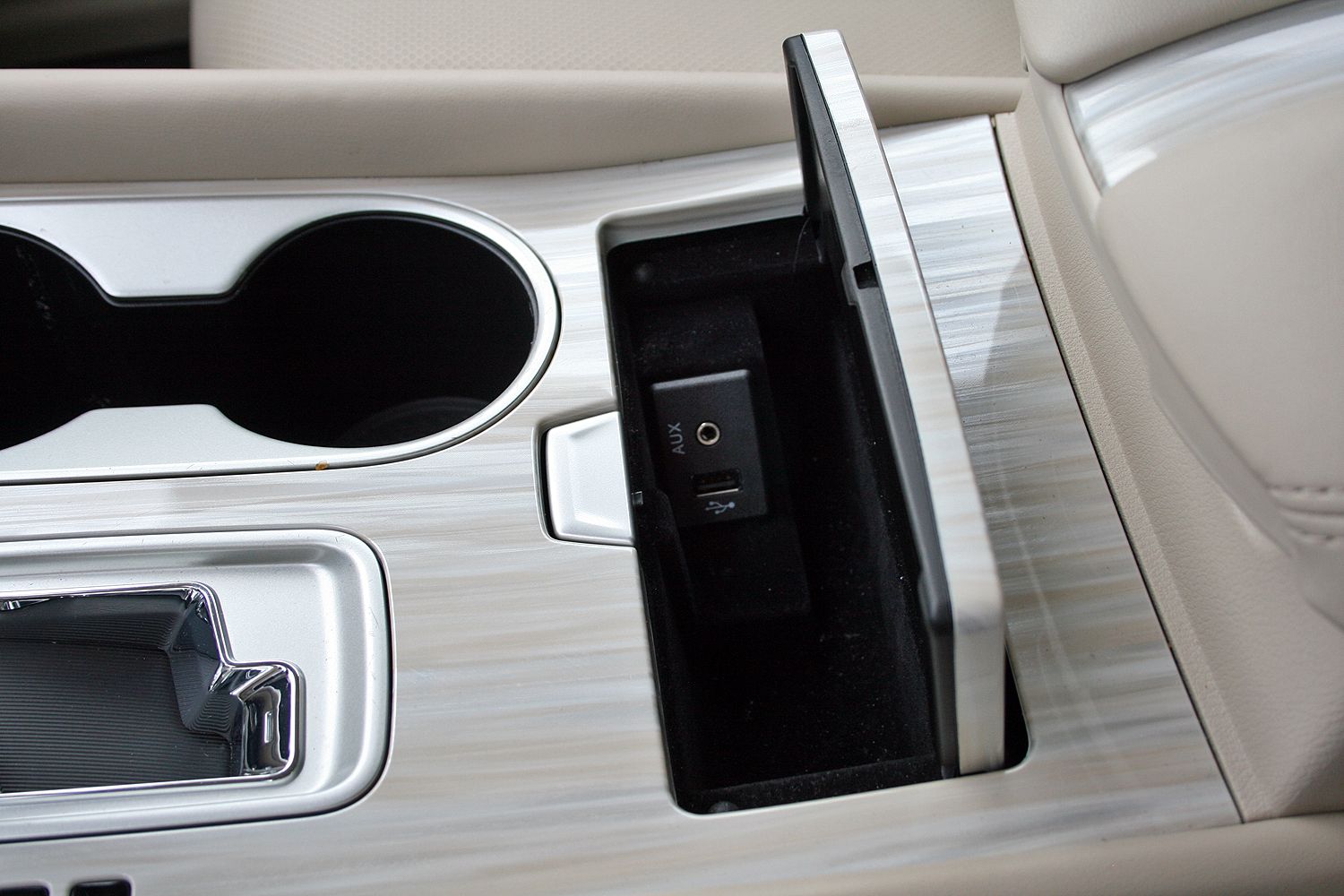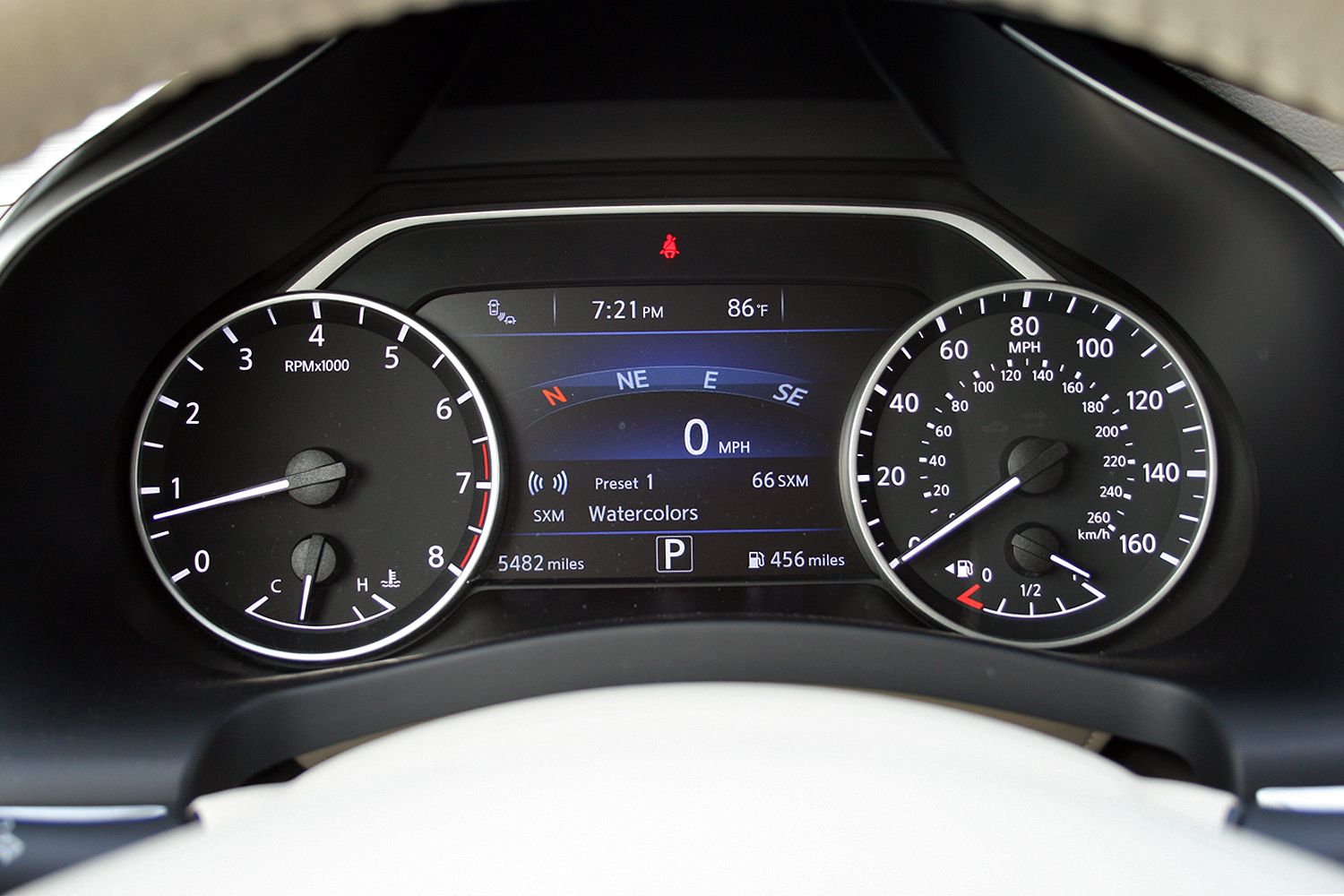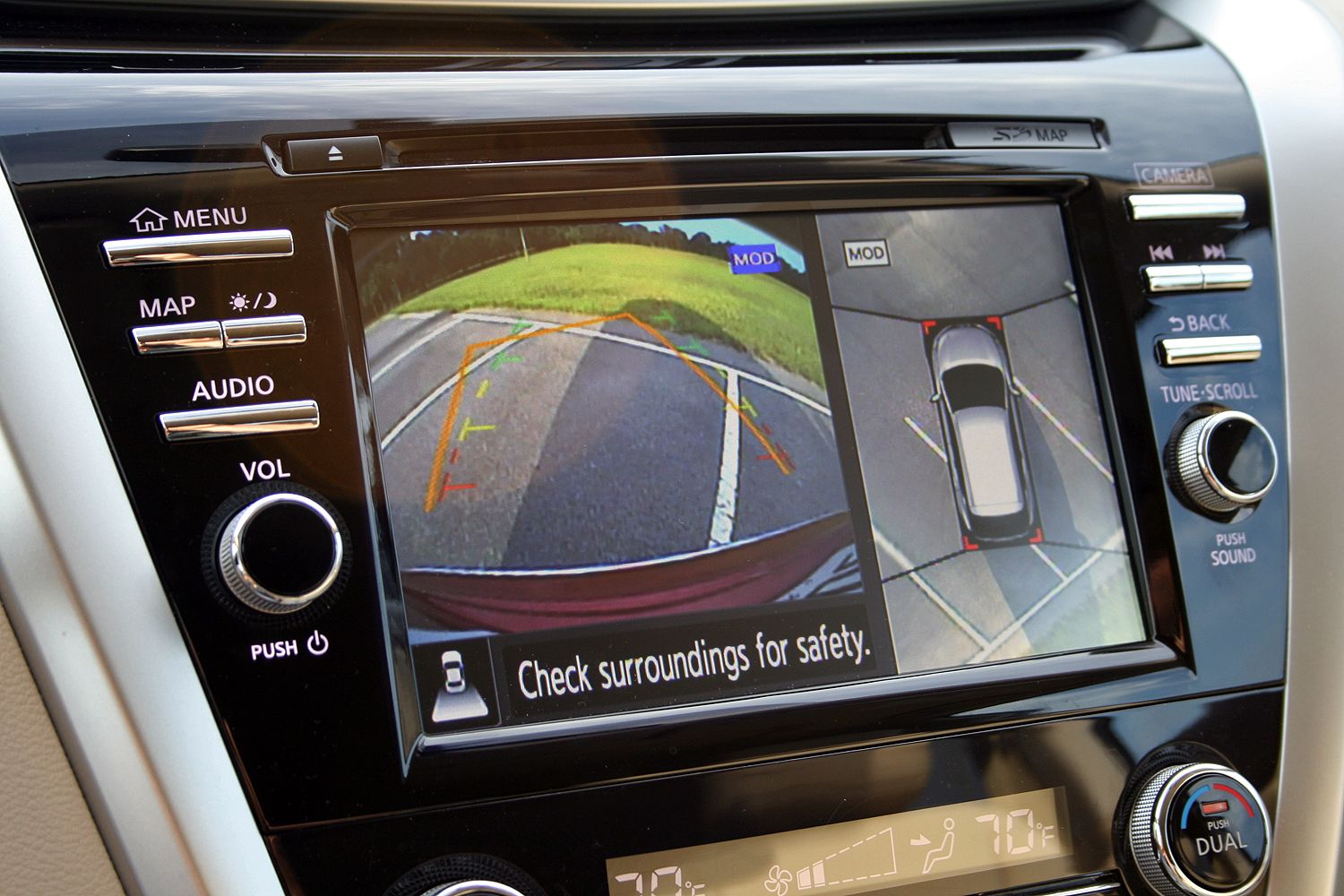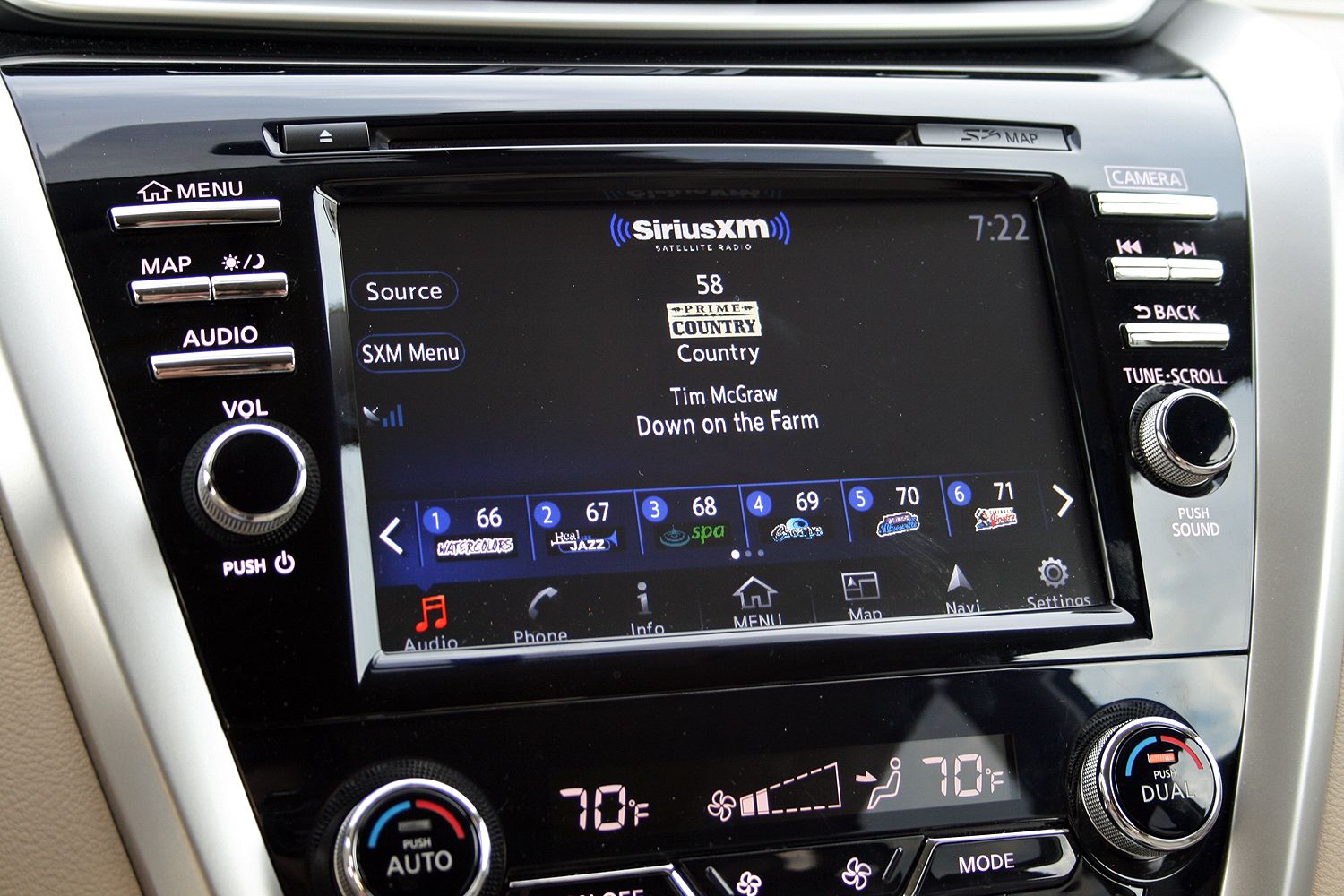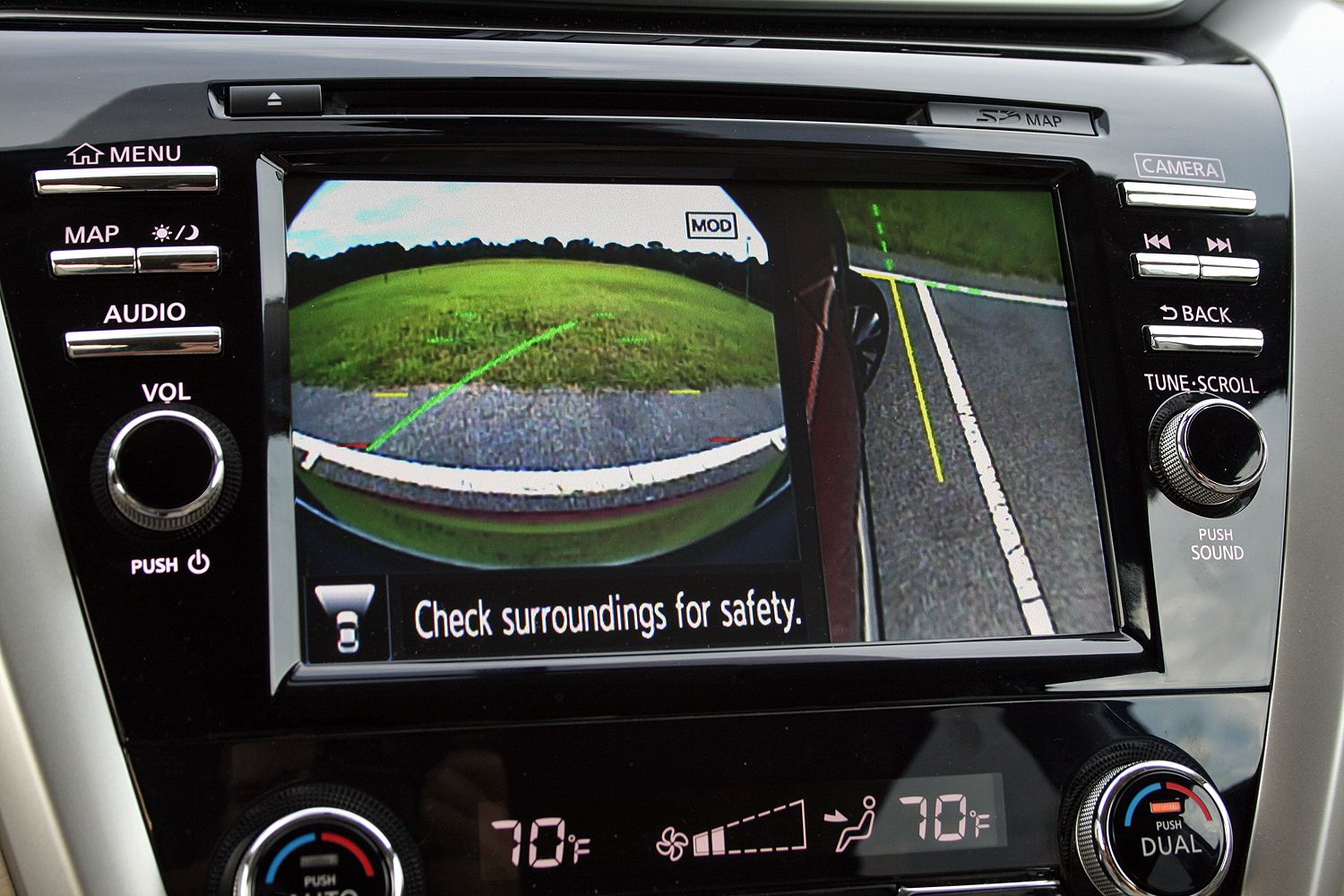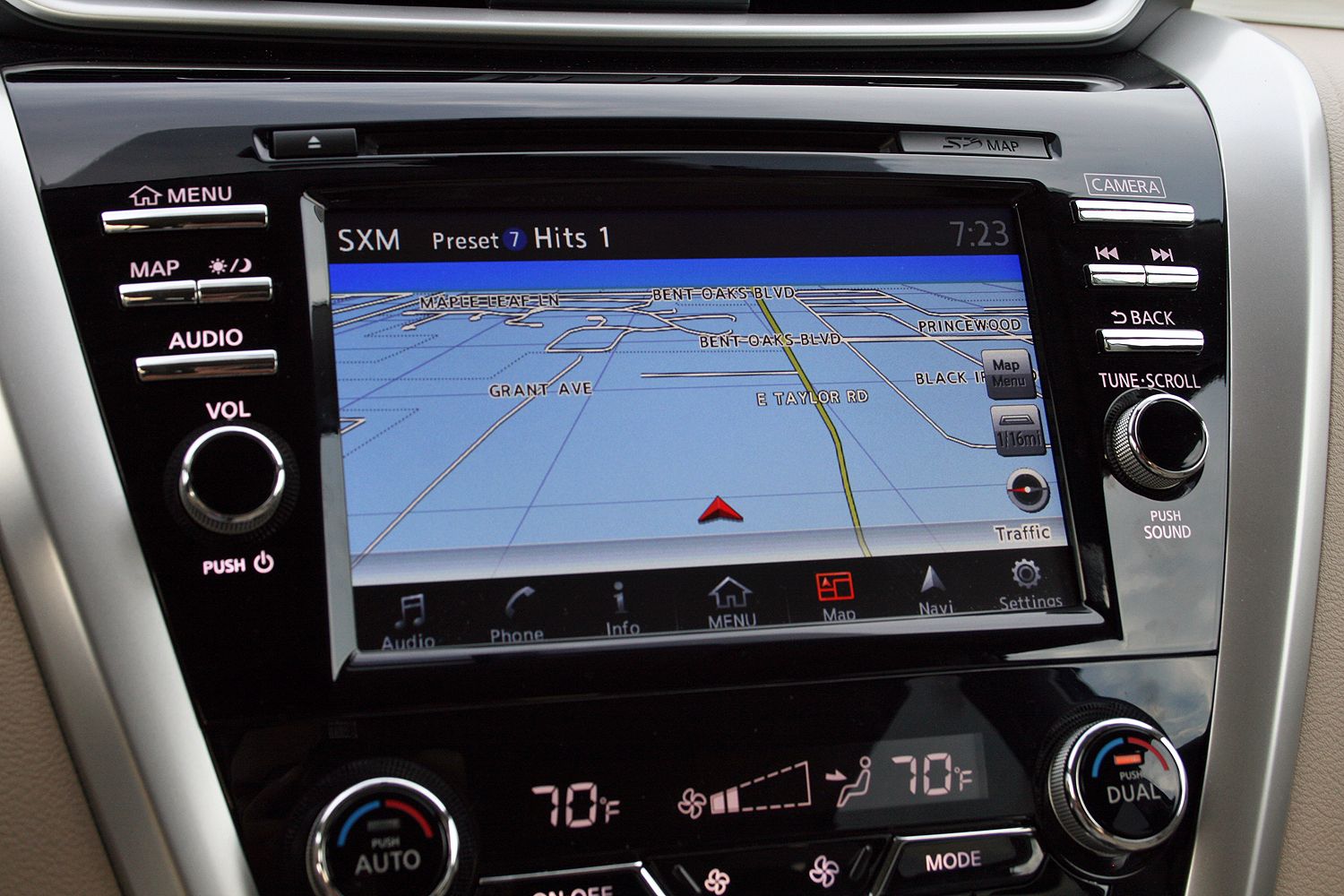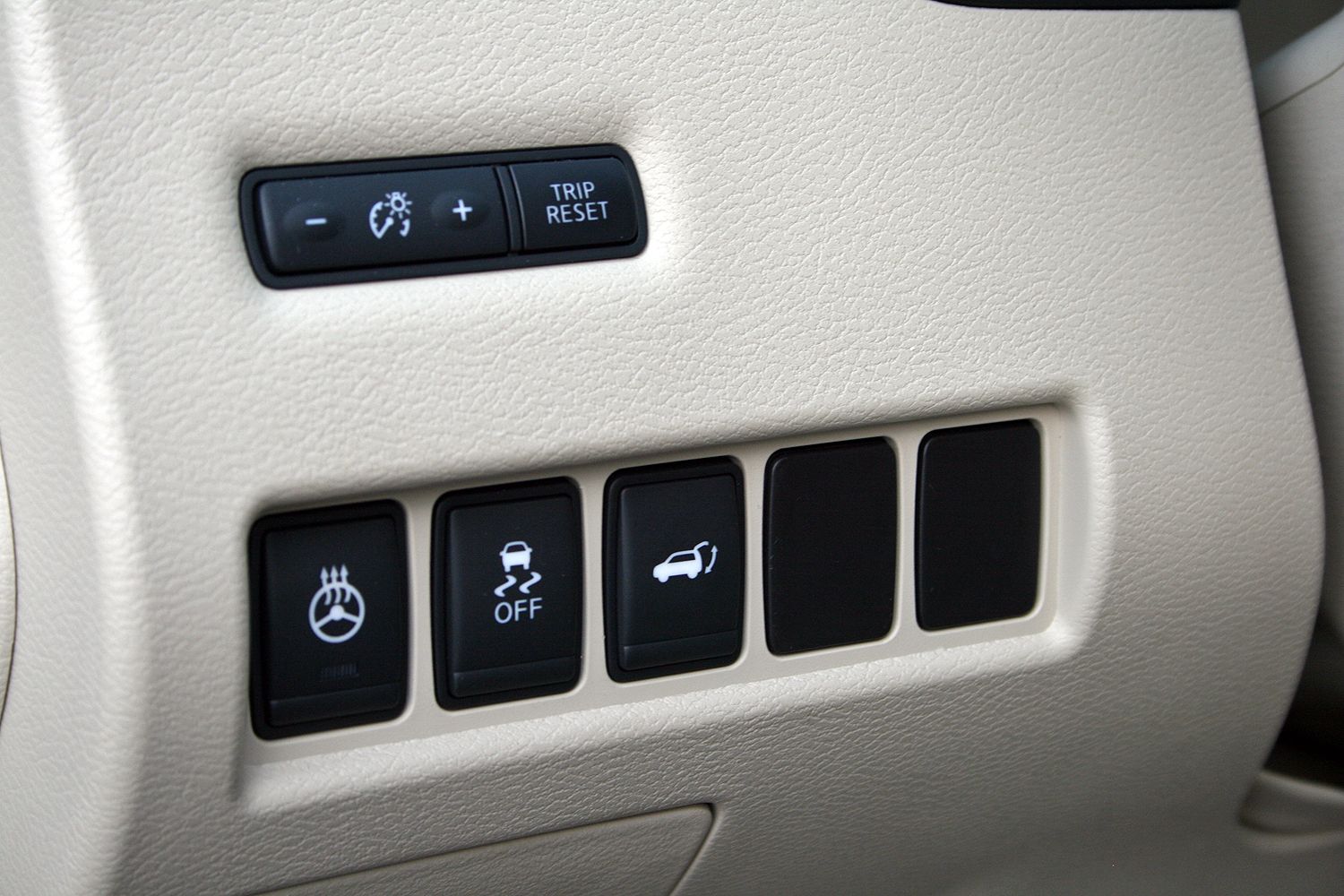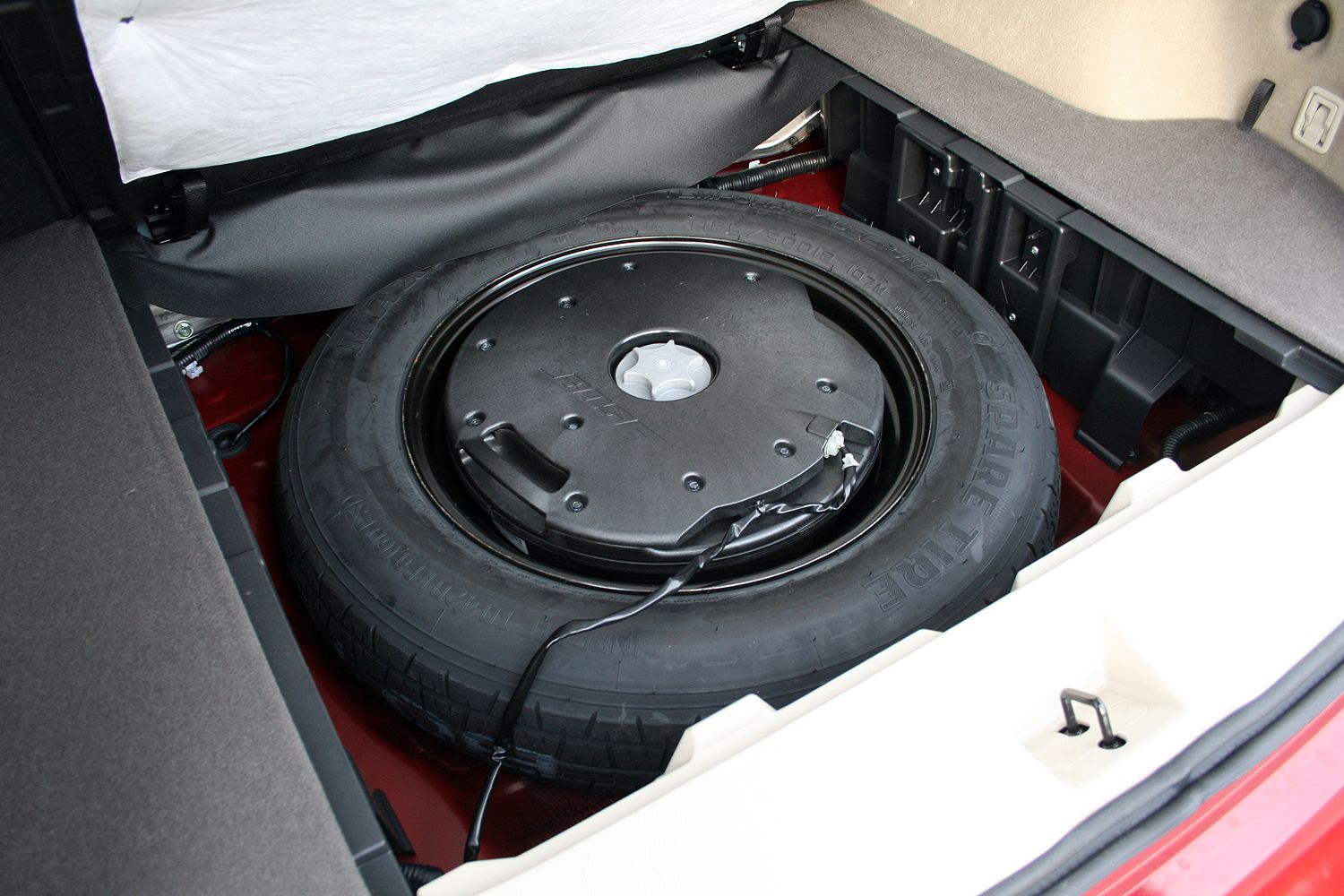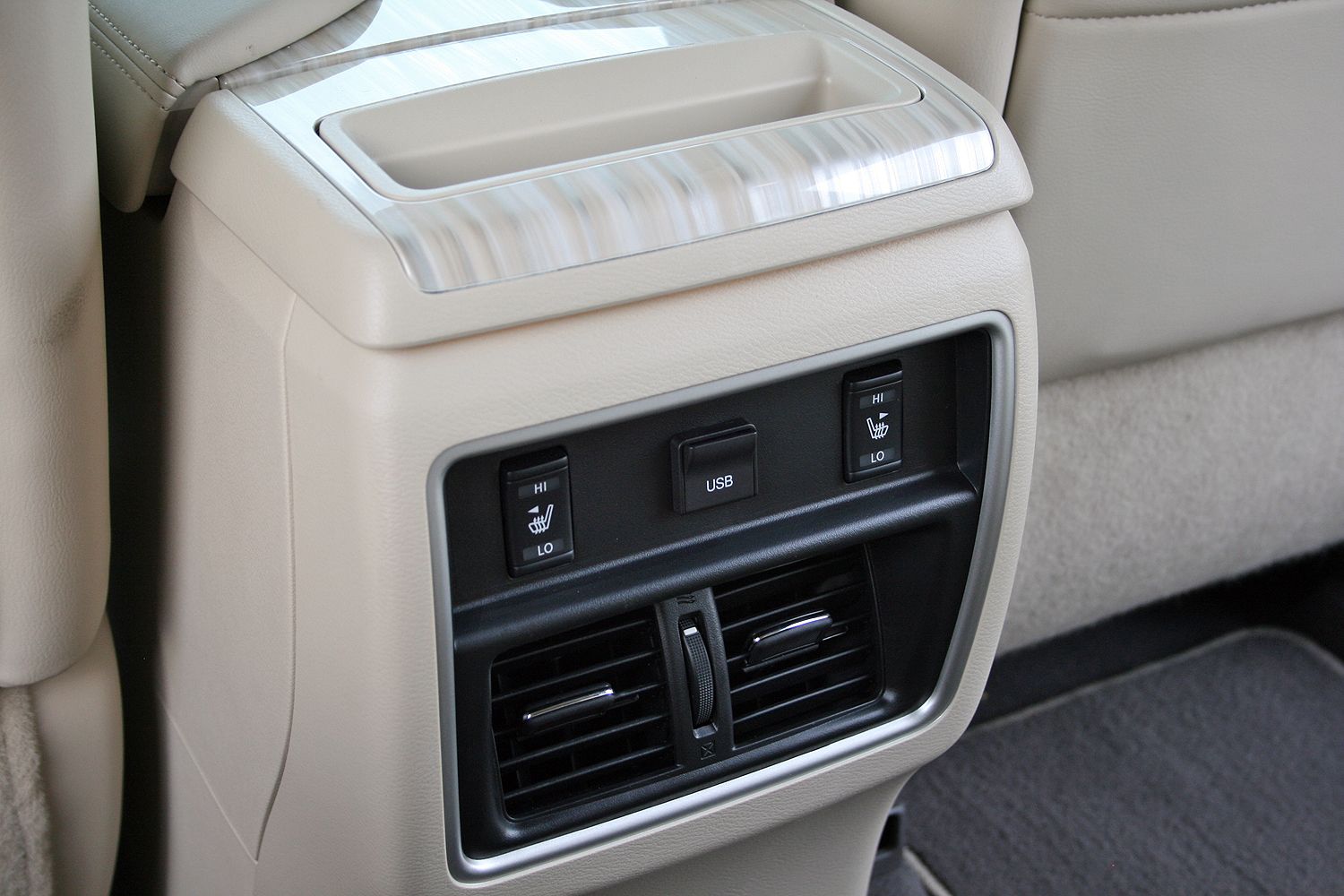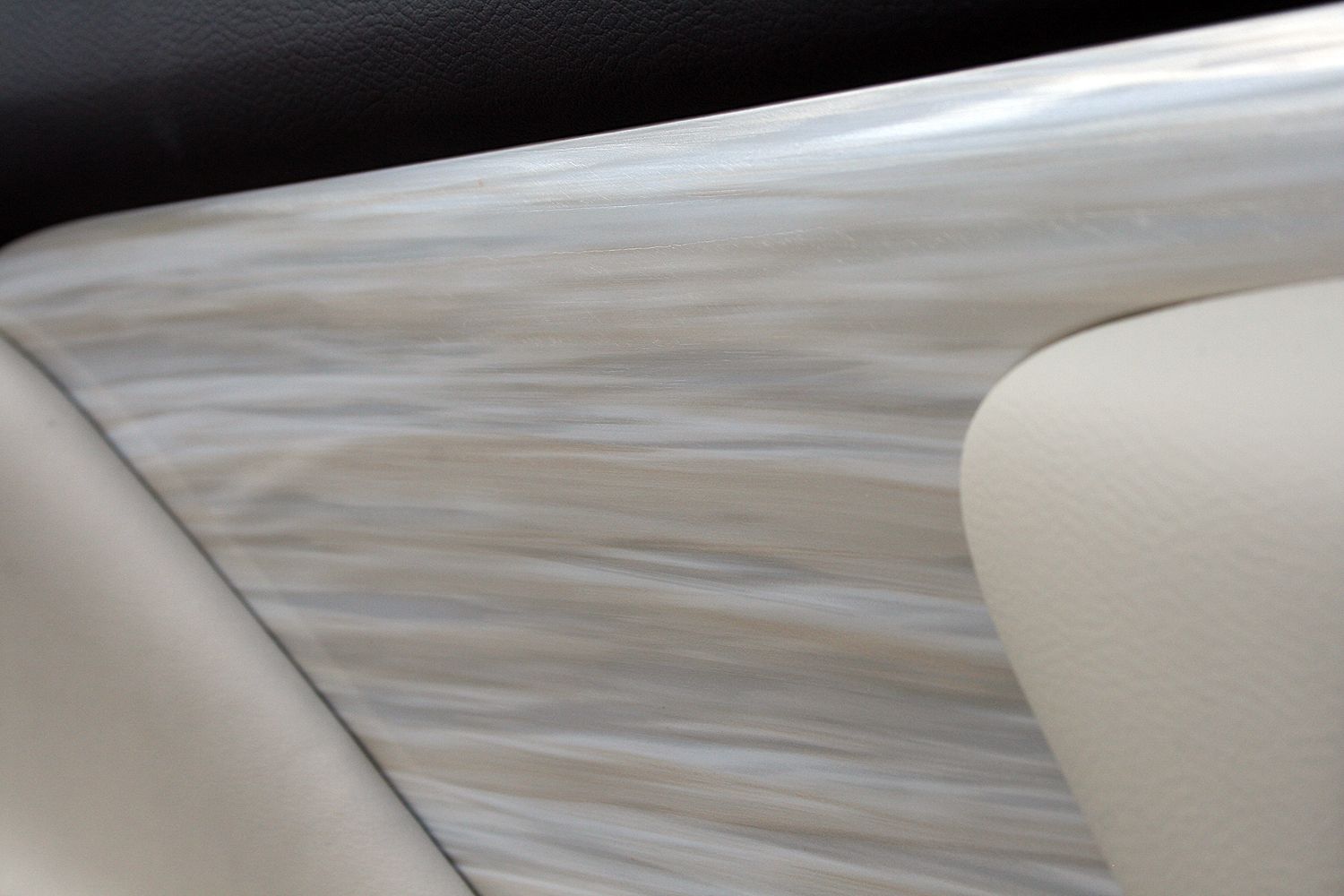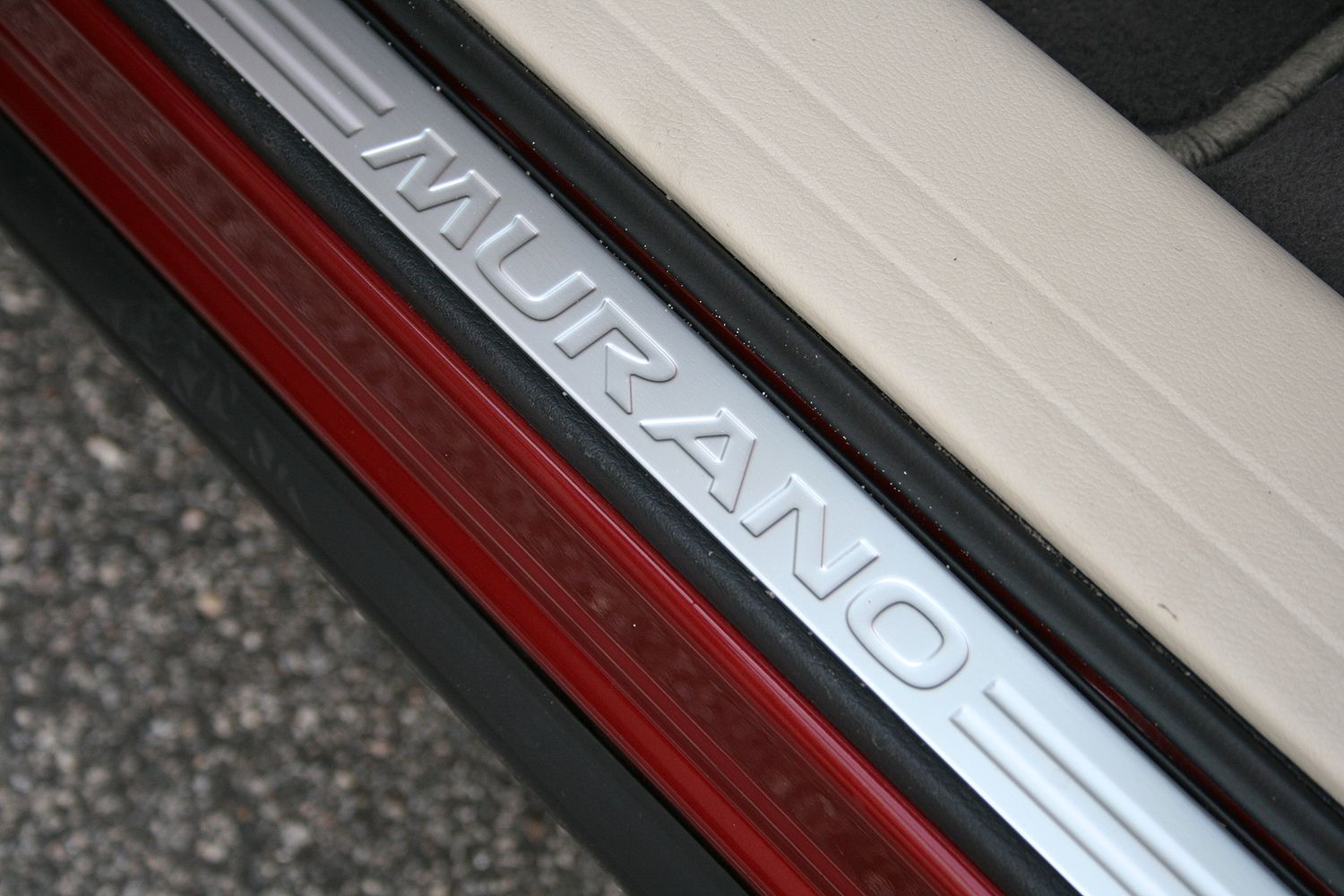Nissan’s third generation Murano launched for the 2015 model year bringing a new level of luxury and comfort to the brand’s high-volume, midsize, two-row crossover segment. Much of that refinement is thanks to the parts sharing between the Murano and the latest generation Maxima sedan. Ample passenger room, loads of cargo space, and the familiar 3.5-liter V-6 are all instantly recognizable in this crossover.
Nothing changes for 2016, including the Murano’s bold, futuristic styling and plush interior. Nissan gives its customers four trim choices to choose from – six if you count the two trim levels with the hybrid powertrain option. The base S, at $29,740, might rank at the bottom of the Murano list, but it still offers a ton of modern convenience features. Most folks will opt for the mid-range SV and SL trim packages – with the SL offering slightly more standard equipment and available options than the SV. And ranking one step below the Infiniti brand, the Murano Platinum offers all the fine fixin’s like heated and cooled leather seats, LED headlights, 20-inch wheels, and a panoramic moonroof – all for a starting price of $39,180.
I recently had the chance to sample a 2016 Murano decked out in the Platinum trim and fitted with the optional AWD system. The long list of features and standard amenities was astounding, even making the Jaguar F-Pace I drove the week before seem almost basic.
So what’s it like to live with the Nissan Murano? Surprisingly pleasant. Find out why below.
Continue reading for the full review.
2016 Nissan Murano – Driven
- Make: Array
- Model: 2016 Nissan Murano – Driven
- Engine/Motor: V6
- Horsepower: 260 @ 6000
- Torque: 240 @ 4400
- Transmission: CVT
- [do not use] Vehicle Model: Array
Video Review
Exterior
The Murano wears one of the more expressive designs on the market. Its swoopy lines meet hard angles in all the right ways. Nissan’s V-Motion grille and fishhook headlights carry plenty of character, making this crossover unmistakable in such a crowded segment.
Up front, the V-Motion grille uses chrome bars riding atop a black grille with a radiating design that meets up perfectly with the stylized headlights. LED daytime running lights and the optional LED main beams give the Murano Platinum plenty of nighttime presence. Fog lights down low are surrounded by black molding, which matches the molding around the lower grille and air dam. The Black trim continues over the wheel wells, giving the soft Murano a more macho SUV-like appearance. It continues along the rocker panels, kicking up midway along the rear doors like some sort of faux rock slider. The black cladding comes to an end out back, after wrapping around the dual, chrome-tipped exhaust pipes. Chrome trim separates the black trim from the painted bodywork while matching other chrome trim seen around the exterior.
The Murano’s beltlines are unmistakable and darn near 100 percent unique in the crossover segment. The swoops and dips of the beltline give the Murano an interesting look, if not a sporty one. The roofline further accentuates the idea, sloping down aggressively towards the rear of the vehicle. It all ends in a small-looking rear window that’s somehow surprisingly big from the inside looking back. The taillights mirror the headlights fishhook shape, with red and clear lenses breaking up the typical monotony seen in many taillights.
Opting for the Platinum model brings 20-inch, machined-faced aluminum-alloy wheels with black-painted pockets. They come wrapped in all-season tires from Bridgestone designed to make the most from the Murano’s AWD system.
Interior
Nissan designers might have pushed the Murano’s exterior to the max, but the interior accommodations are much more reserved. Decked out in the Platinum trim, my tester proved to be darn near Infiniti like, with tons of comfort features, a laundry list of safety and driver aids, and a surprising level of functionality.
Up front, the driver and front passenger are treated to Nissan’s Zero Gravity seats, soft-touch materials, and dual-zone climate control. The driver even has a heated steering wheel. Power-everything makes adjustments easy and the driver’s position comes with three-way memory settings. The Cashmere-colored leather is accented by a plastic material that looks almost like stonework. And, while it has a high-gloss finish, it never reflected harsh sunlight. A satin chrome trim ring runs around the center stack and on the steering wheel spokes for a modern touch.
Speaking of the center stack, taking center stage is the NissanConnect infotainment system. It features all the modern conveniences like AM/FM/SirusXM/Bluetooth, as well as Nissan’s 360-degree camera system. A convenient button allows for quick and direct access to the camera feature anytime at speeds roughly below 10 mph. Believe me, it’s a feature very easy to get spoiled with. Even with the Murano’s compact footprint, having the birds-eye view made tight parking jobs a stress-free venture.
Down below, the dual-zone climate controls are absolutely simple to operate, with knobs controlling the temperature while a rocker switch controls the fan speed. A row of buttons down below handle defrost and mode settings. Knobs for the heated and cooled seats are mounted on the center console, just under the HVAC switches. There’s also a 12-volt power outlet.
Behind the gearshifter and cup holders lies a small storage compartment with a USB port and AUX input jack. The compartment isn’t big enough to completely house a modern phone, but my iPhone 6 stands up perfectly, allowing for an easy reach.
Behind the wheel, the driver has a gauge cluster with both analog and digital gauges. The digital screen allows for a moderate level of configurability, including navigation and entertainment information. My only gripe here is the speedometer. Nobody is going to drive the Murano 160 mph, so why waste a third of the speedometer counting past 120 mph? I miss speedometers that count by 10s.
Second row passengers are treated to a surprising amount of room. The three-person bench seat reclines, offers a folding center armrest, and features heated outboard seats. Air vents keep passengers cool and happy. There’s also a USB port for charging devices.
Cargo room behind the second row seat is large. There’s enough room for a weekend’s worth of luggage for four people. When larger cargo needs to be hauled, the second row seats fold flat with the simple pull of a handle near the tailgate. Electric motors return the seats upright. There’s also a small amount of storage around the compact spare tire stored under the floor, perfect for gloves, ice scrapers, and other random stuff.
Besides the overzealous speedometer, my only negative thoughts on the interior include items around the front seats. First and most annoying, the seat belt attachment at the base of the B-pillar is exposed and is very easily kicked by rear seat passengers. This results in front passengers continually getting jerked back by a tightening seat belt. Secondly and more nit-picky, the trim piece that covers the seat controls curves around toward the front of the seats. This piece is marred by a rough edge that scrapes the back of the driver's left leg and the front passenger's right leg when riding with feet tucked under the seat. A quick rub with 100-grit sand paper would likely cure the problem.
Drivetrain
Powering the Murano is Nissan’s familiar 3.5-liter V-6. The engine is a carry-over from the previous Murano generation and is part of the VQ family of engines. Its all-aluminum design helps save weight, especially important since Nissan packages the engine and transmission together under the hood. The V-6 makes adequate power for pulling the Murano along, with 260 horsepower at 6,000 rpm and 240 pound-feet of toque at 4,400 rpm.
Like almost every other Nissan vehicle, the Murano uses a Continually Variable Transmission. Branded the Xtronic, this CVT might be a carry-over item, but feels much better thanks to a wider gear ratio spread. Combined with a taller final drive ratio, the Murano feels peppier around town and uses less fuel on the highway than the last generation. Also thrown in the mix is an AWD system that sends power rearward when extra traction is needed.
As far as fuel economy, the EPA rates the 2016 Murano with AWD at 21 mpg in the city, 28 mpg on the highway, and 24 mpg combined. During my week and driving with a heavy foot, I averaged 21.8 mpg.
Safety
The Murano comes packed with both active and passive safety equipment. Predictive Forward Collision Warning, Forward Emergency Braking, and Intelligent Cruise Control all come with the optional Technology Package, but everything else comes standard. This includes Blind Spot Warning, Rear Cross Traffic Alert, stability control, traction control, ABS, and the Around View Monitor with Moving Object Detection thanks to its 360-degree camera view.
On the passive side, both the driver and front passenger have front and side-curtain airbags and side-impact airbags. The driver also has knee air bags. Of course, the Murano comes with LATCH posting in all three positions in the second row for child seats.
Other safety features include Hill Start Assist, a security system, and Nissan’s Easy-Fill Tire Alert system that chirps the horn when the correct tire pressure is achieved when filling a low tire.
Crash results for the Murano are good. The Insurance Institute for Highway Safety ranks the Murano as “Good” in the small overlap test, the moderate overlap test, the side-impact test, and roof strength test. Even the seats and head restraints are ranked “Good.” With the optional preventative safety equipment found on my tester, the IIHS gives the Murano a “Superior” rating for front crash prevention. The Murano’s LATCH system also gets an “A” for ease of use.
Pricing
The base 2016 Murano S in FWD carries a starting price of $29,740. Most folks will probably take the $3,080 leap to get into the SV model, which comes with the NissanConnect system with navigation, remote starting, eight-way power driver seats, and USB ports. The SL trim adds leather seats, the indispensable Around View Monitor, a premium Bose audio system, and adjustable interior ambient lighting, all for a starting price of $37,130.
Then there’s the Platinum, like my tester. It adds the 20-inch wheels, LED headlights, climate-controlled front seats, a heated steering wheel, and heated rear seats for $39,180. Adding AWD bumps the price to $40,780.
My tester came with a couple options, including the $2,260 Technology Package and $210 worth of floor mats. Besides the safety features added by the Tech package, it also brings the power-folding panoramic moonroof. Add on the $900 destination charge, and my tester came to $44,070.
Competition
Ford Edge
The Murano might have the wildest styling in the crossover segment, but the Edge is a close second. The optional Sport trim level uses a monochromatic color scheme with blacked-out trim pieces that gives it a sinister look worth checking out. Lesser trim levels use a more traditional chrome appearance. And, like the Nissan, this two-row crossover offers plenty of room for four and a decent amount of room for five in a pinch. Cargo room is also outstanding.
The Edge can be had with three engine options: the 2.0-liter four-cylinder EcoBoost, the 3.5-liter V-6, or the mighty 2.7-liter EcoBoost V-6. That 2.7-liter V-6 makes an impressive 315 horsepower and 350 pound-feet of torque, making the Edge the hotrod of the bunch. You’ll have to choose the Sport trim in order to get the 2.7-liter, however. A traditional six-speed automatic does the shifting for all three engines.
Pricing is competitive, with a base MSRP of $28,700 for the SE trim. Three more trim levels give room for growth. They include the SEL at $31,790; the Titanium at $35,600; and the Sport at $40,400. Of course, adding options pushes the pricing further northward.
Read our full review on the Ford Edge here.
Kia Sorento
The Kia Sorento is an interesting crossover. It can be had with seating for either five or seven passengers, depending on trim level and options chosen. Nevertheless, it directly competes with the Edge and Murano in this tightly packed segment.
And like the Ford, the Sorento can be had with your choice of three engines. The base 2.4-liter four-cylinder comes in the L and LX models; the upgraded 2.0-liter turbo four-cylinder is the mid-grade bread-n-butter coming standard in the EX, and the range-topping 3.3-liter V-6 comes standard on the LX V6, EX V6, SX, and SX Limited. AWD is optional on all but the base L.
Pricing start at $25,400 and grows in to the mid-$40,000 range with all the options selected on the SX Limited.
Read our full review on the Kia Sorento here.
Conclusion
The Nissan Murano surprised me, to be honest. Its blend of comfort, amenities, interior space, and peppy driving had me wishing for more than a week with my tester. Its soft seats and easy-to-use controls made driving a pleasure – something not often said about modern crossovers – and its outstanding people- and cargo-hauling functionality made me think its exterior dimensions had to be bigger than advertised.
Even the CVT was a surprise. I’m not normally a fan of this transmission style, yet its smooth operation is nearly devoid of the dreaded “rubber banding” effect that plagued CVT designs for decades. Nissan has stepped up its game with CVT tuning, and it’s clearly evident here.
The Murano’s only downside is the price. At $44,000, my fully loaded tester is competing in an upscale market. Granted, a lesser-equipped model comes at a lower price, but many of the features found on the Platinum with the Tech Package are hard to resist. Then again, that price is competitive in the segment.
Nevertheless, the Murano proved to be an outstanding crossover for small families or empty nesters wanting an unassuming luxury cruiser.

